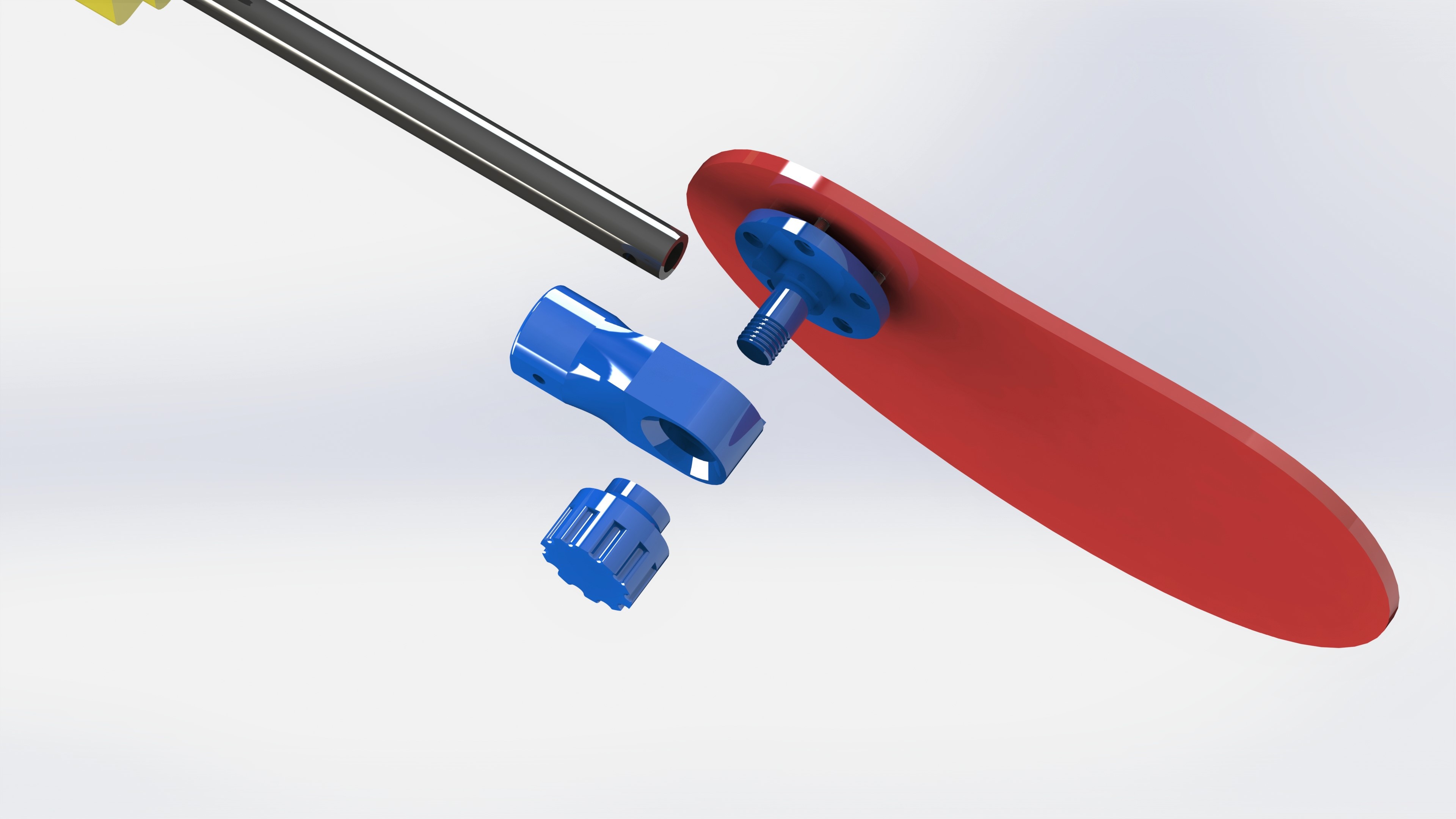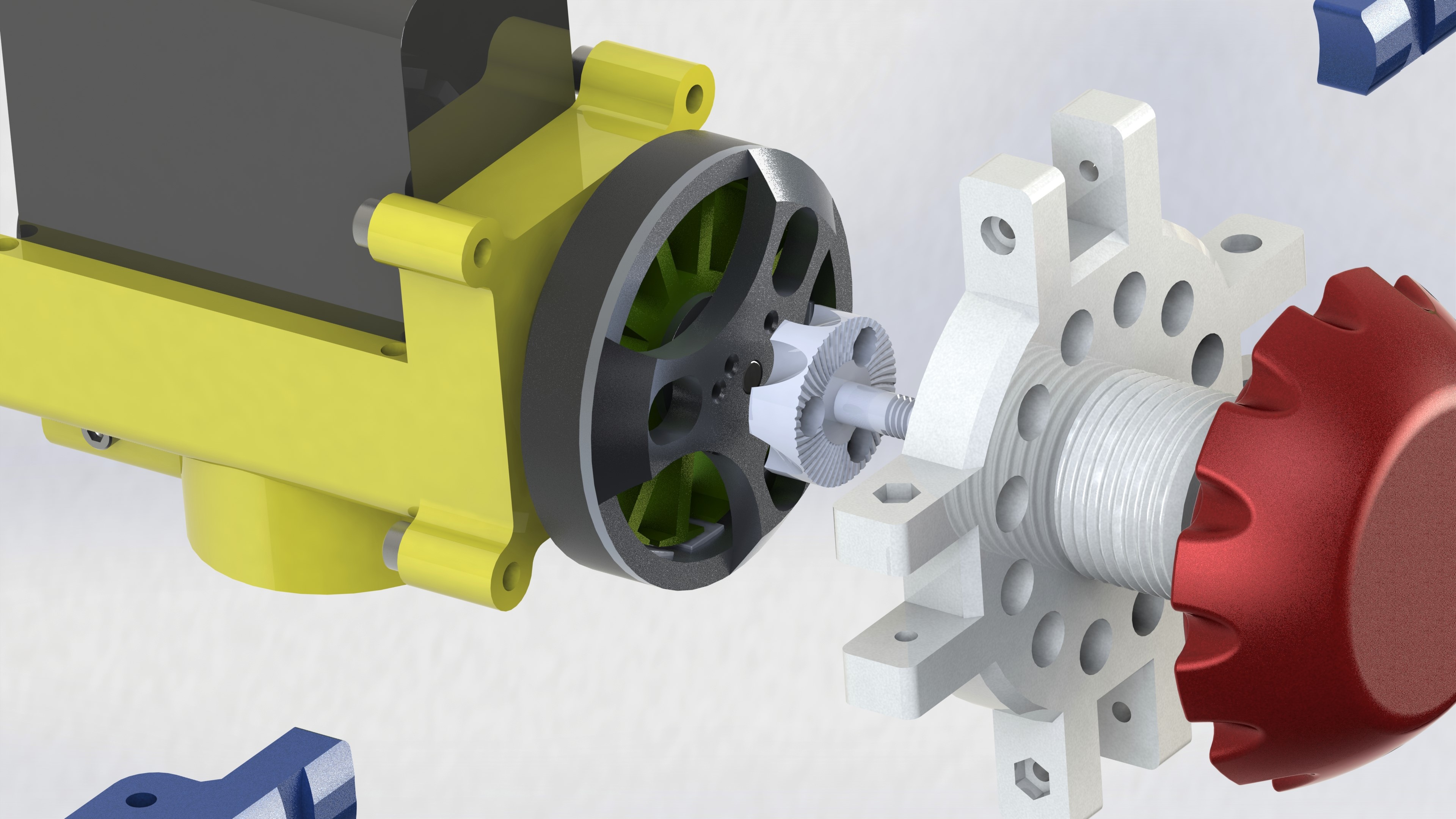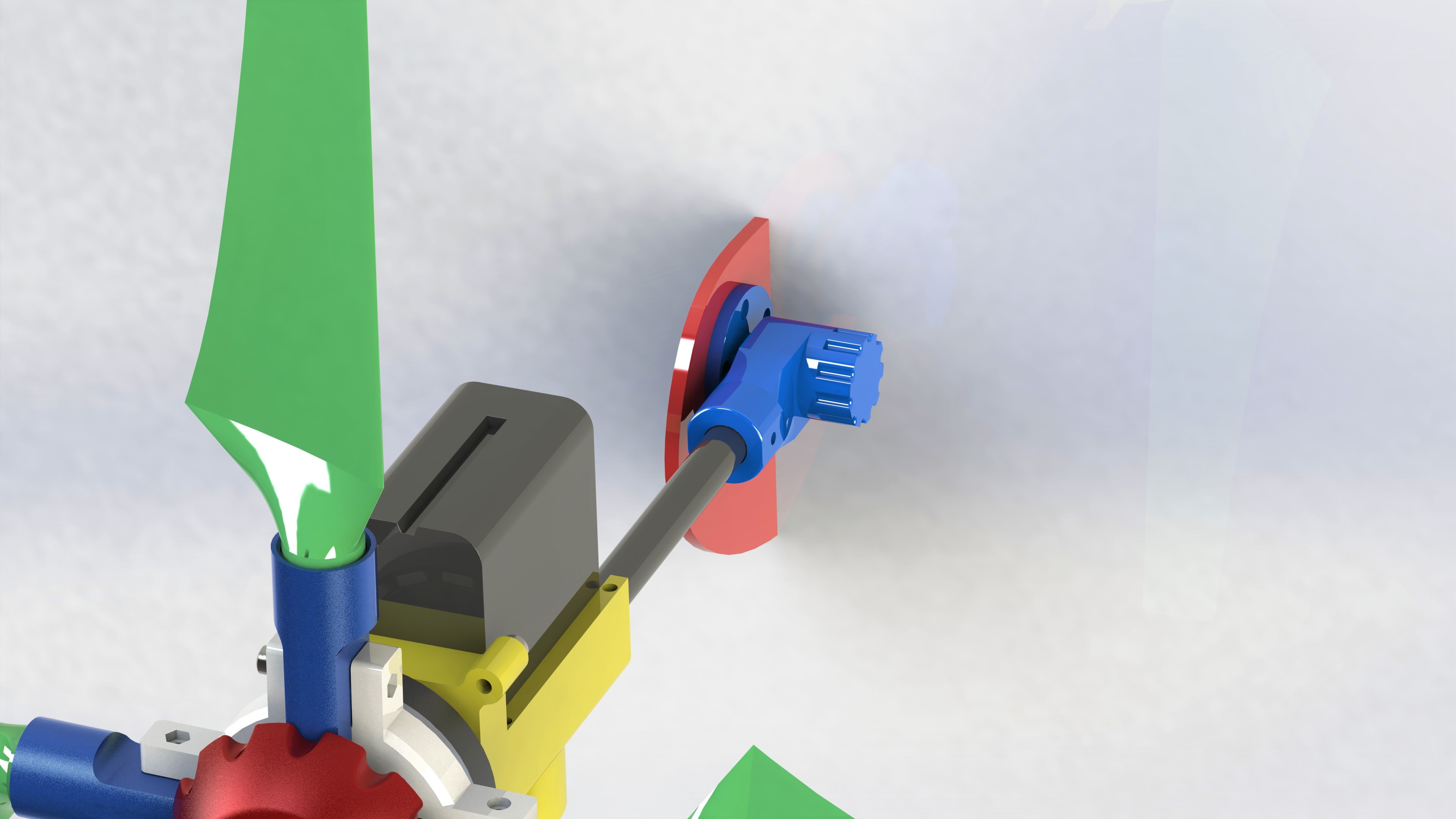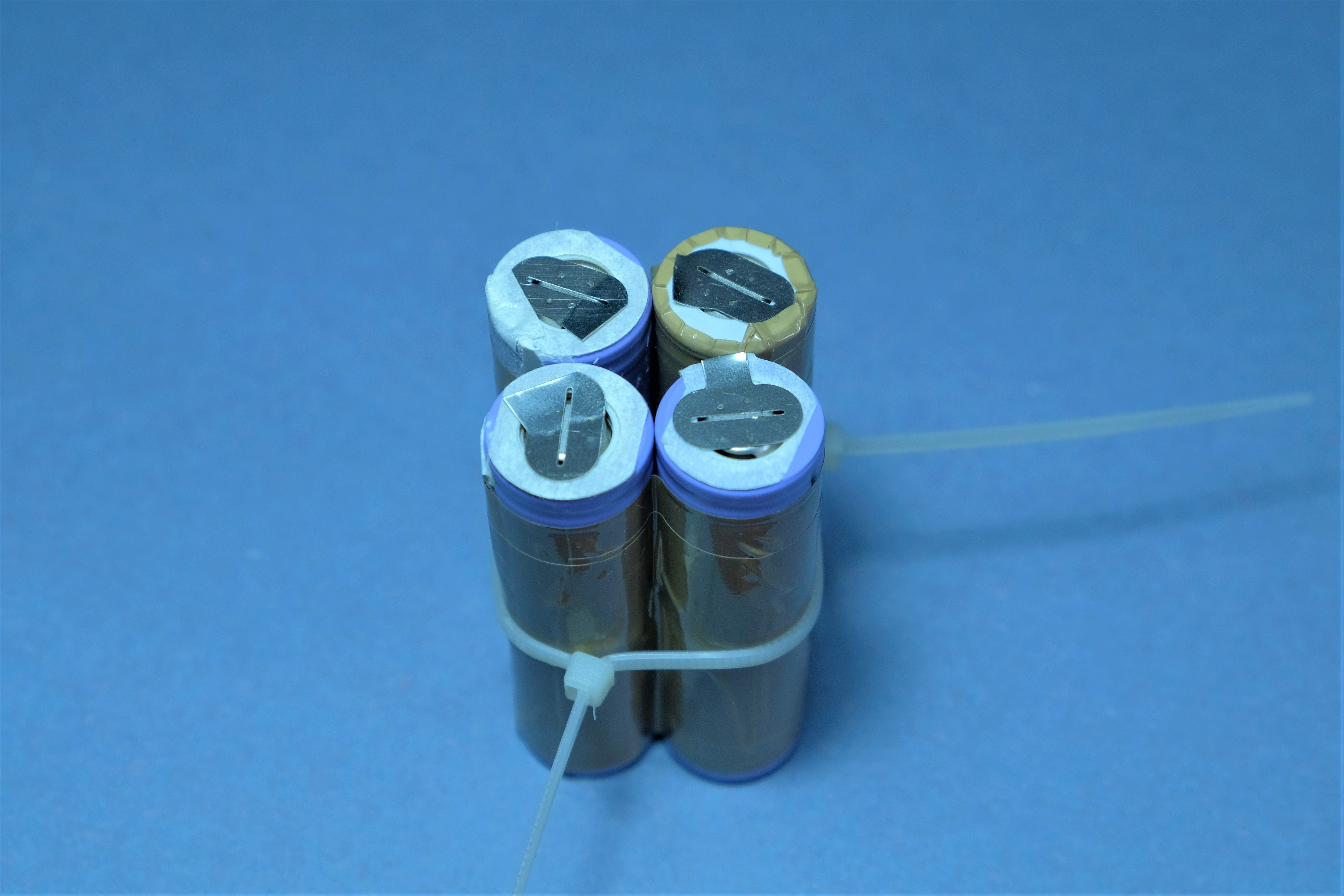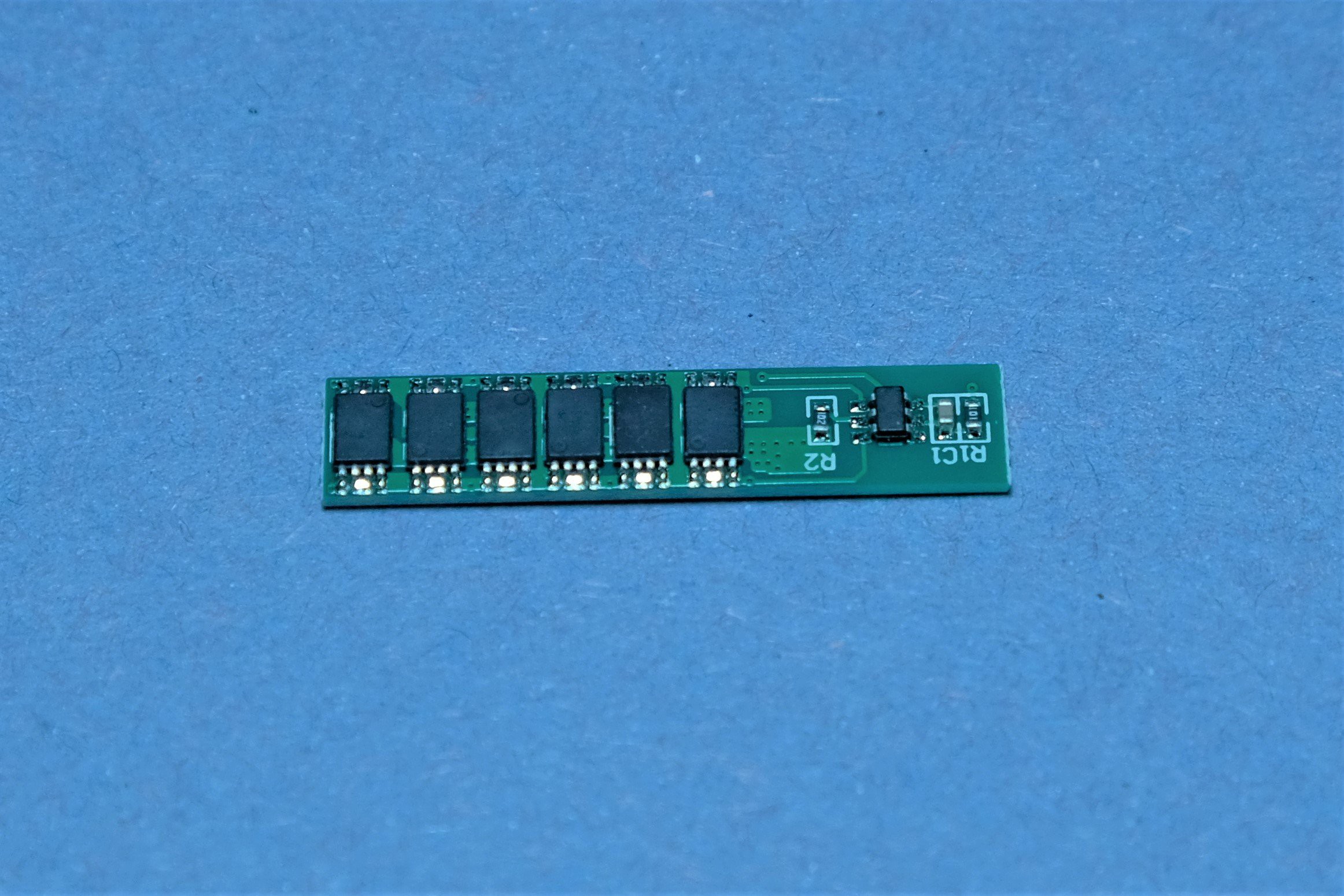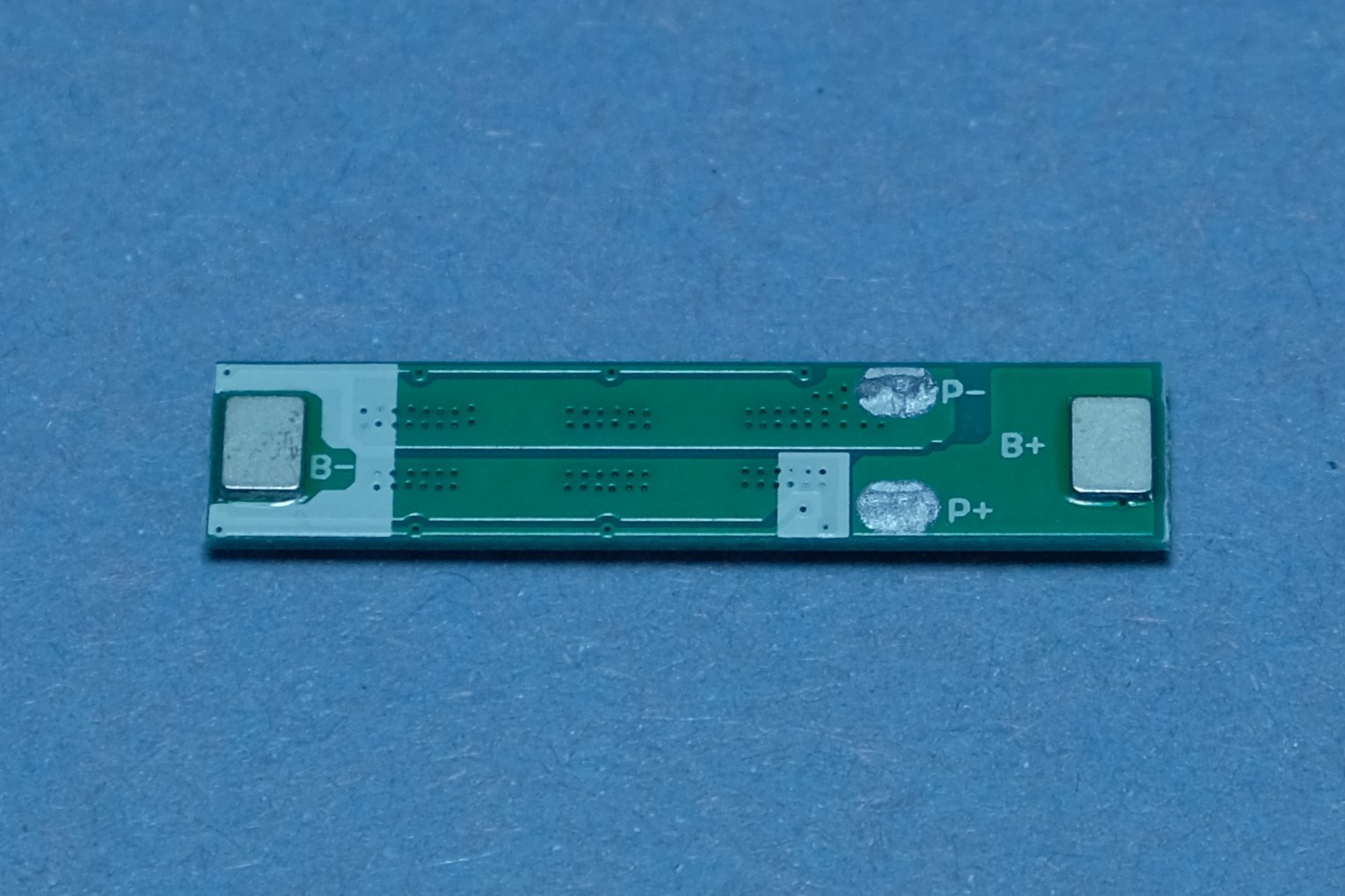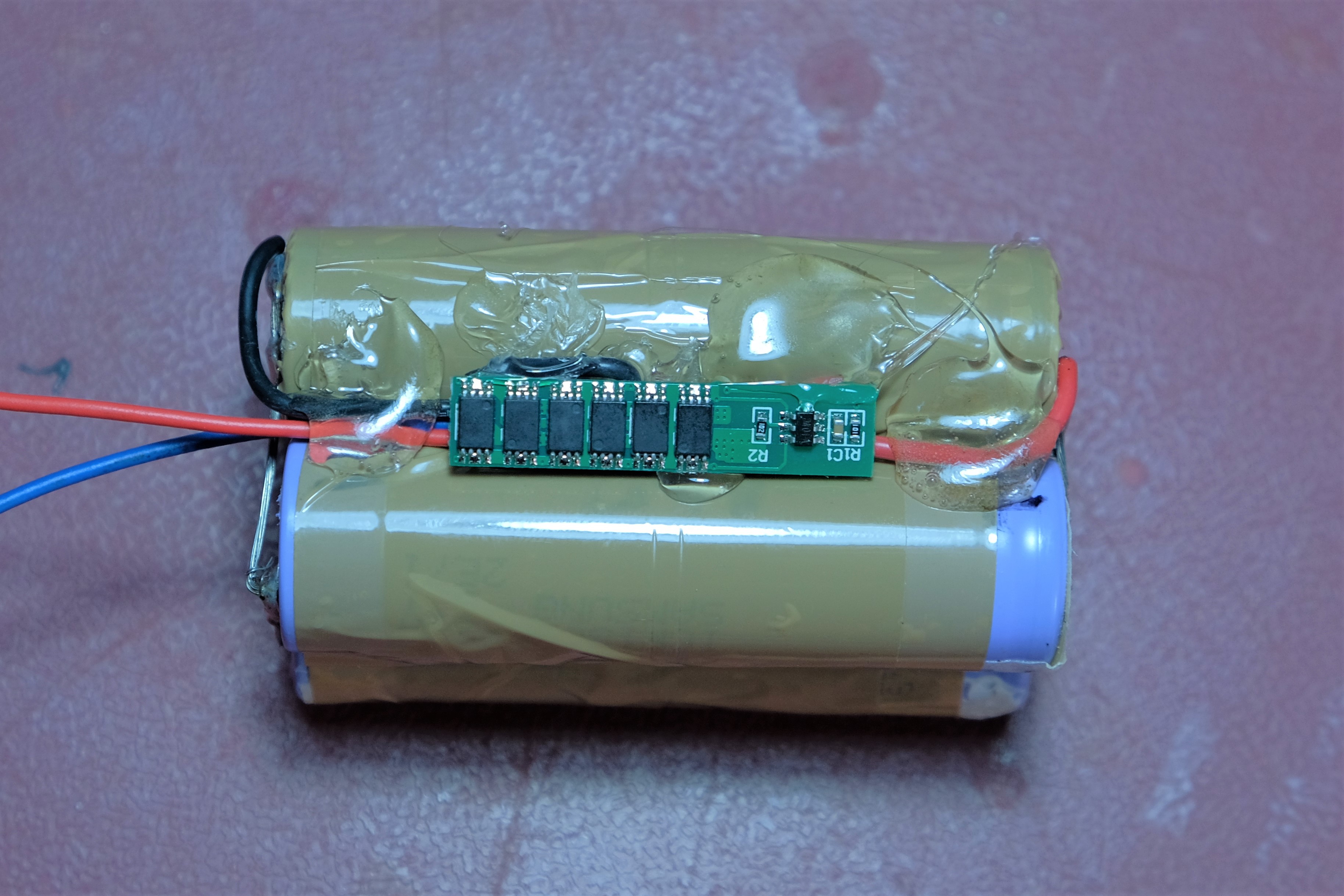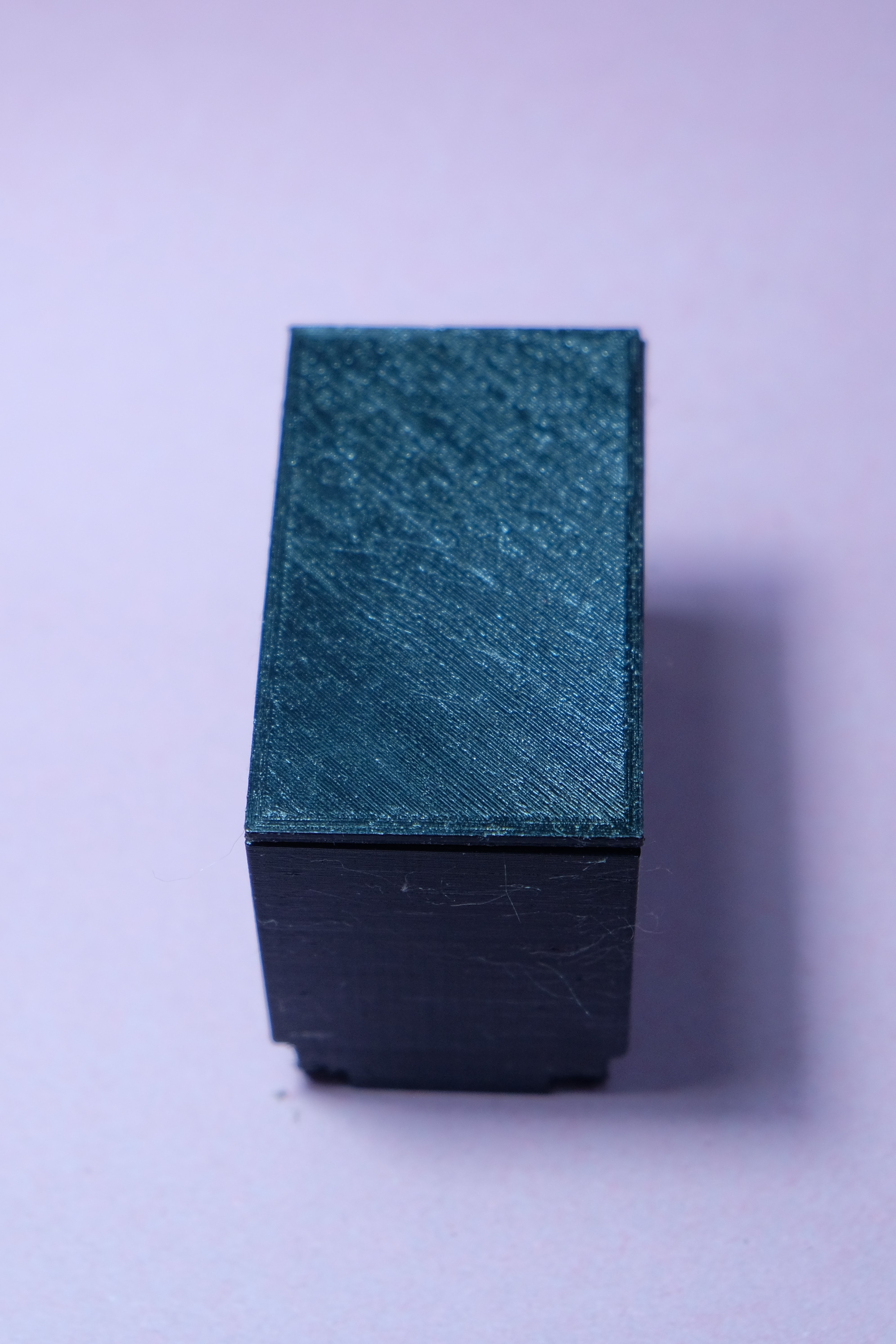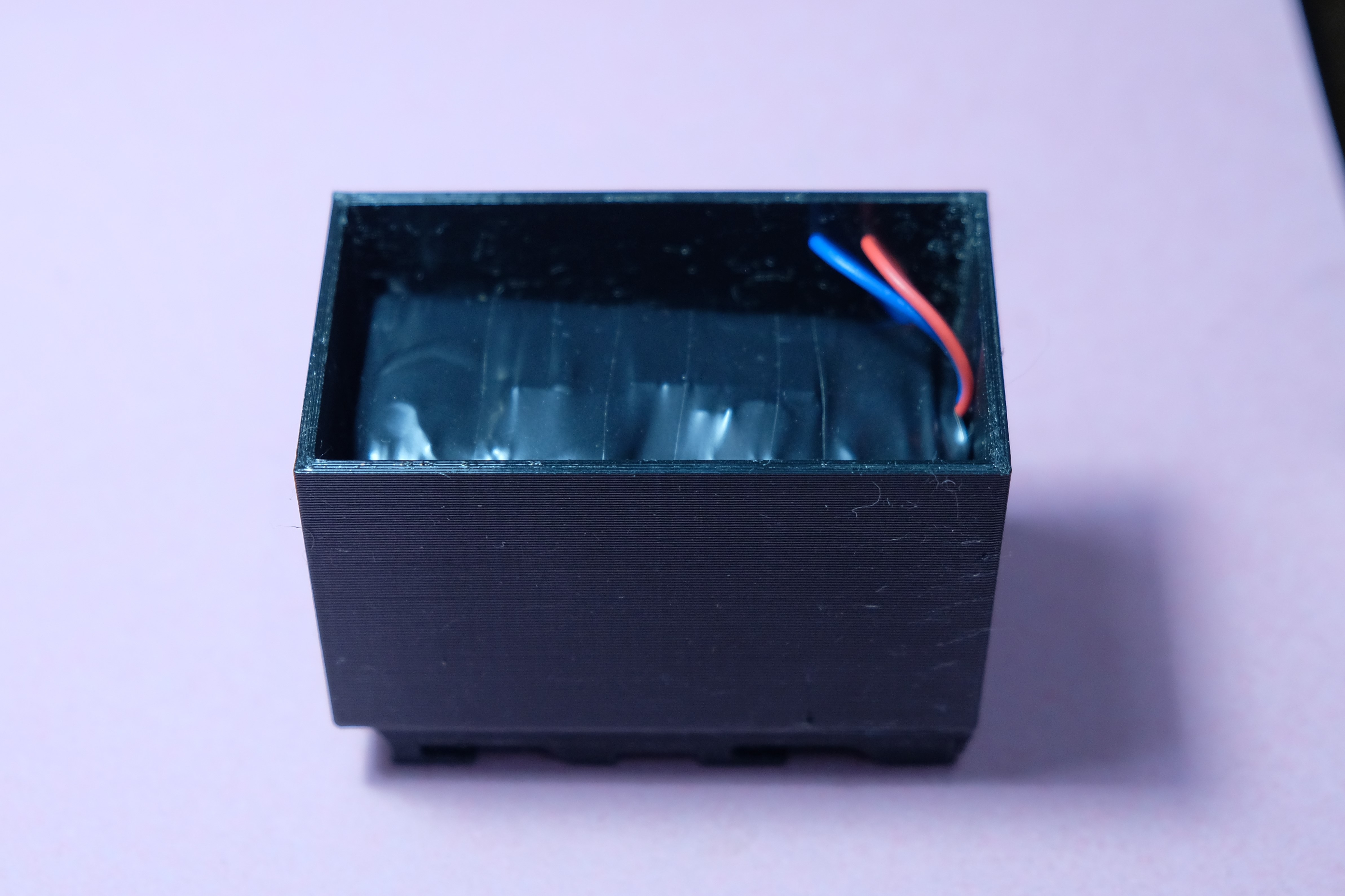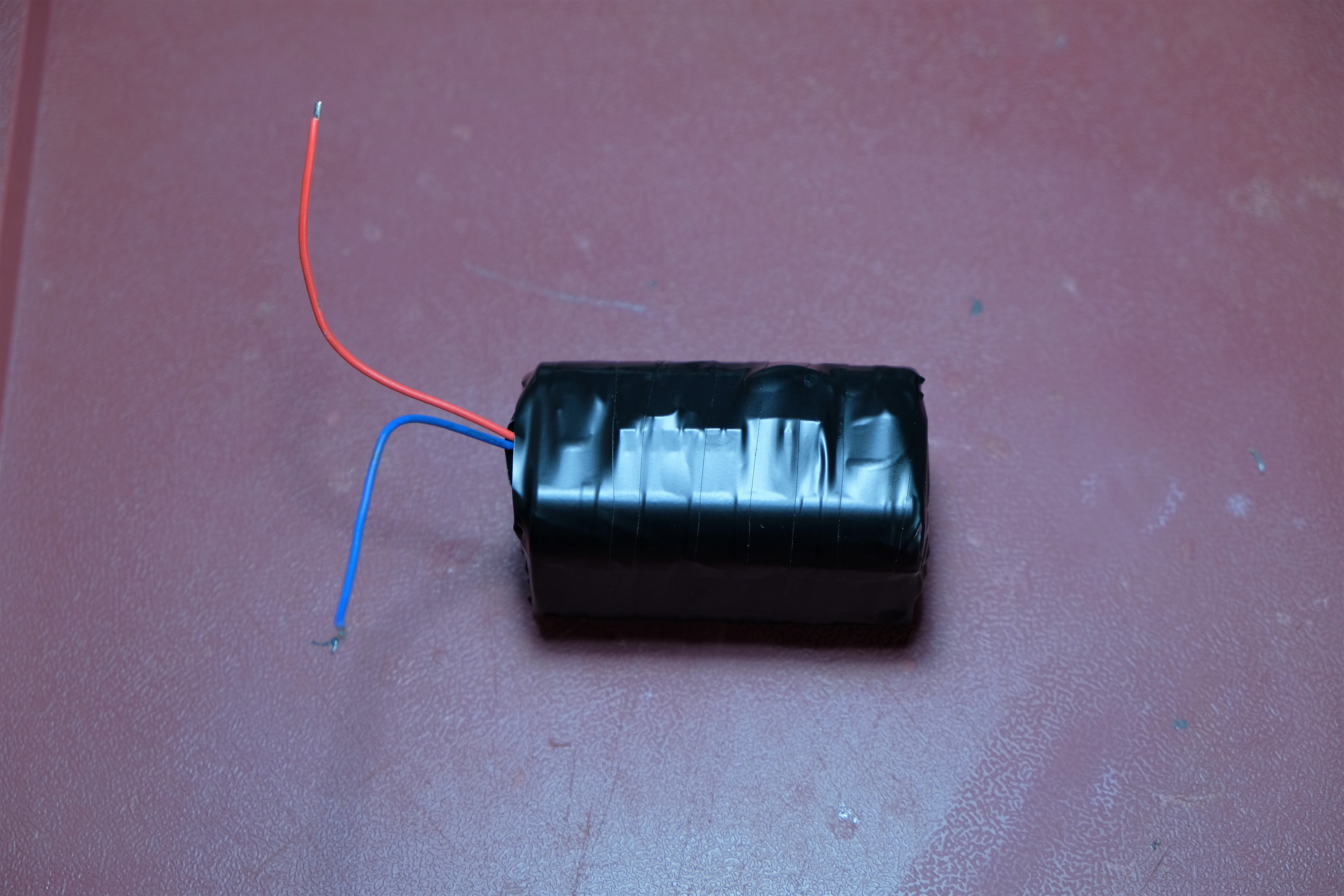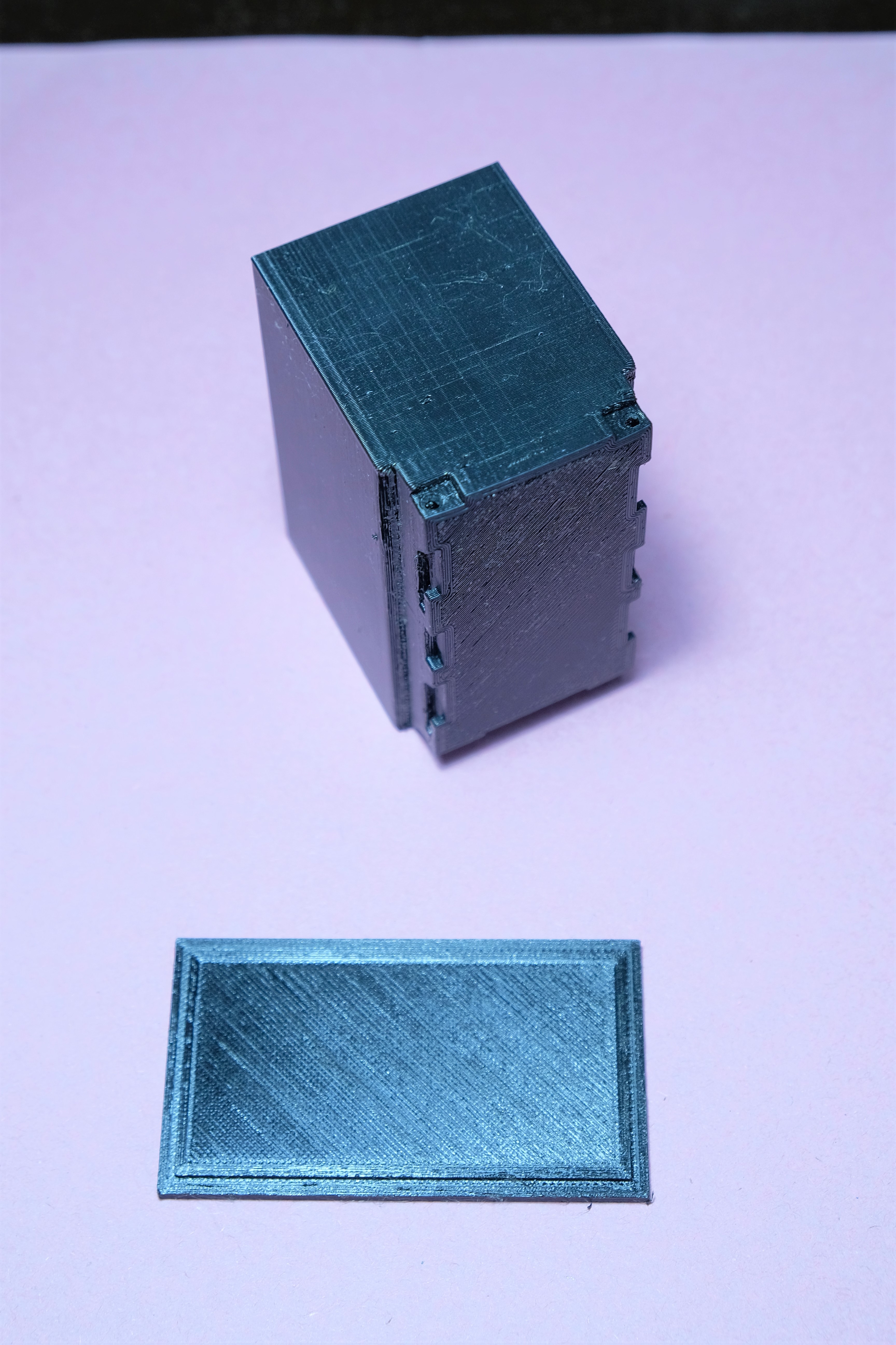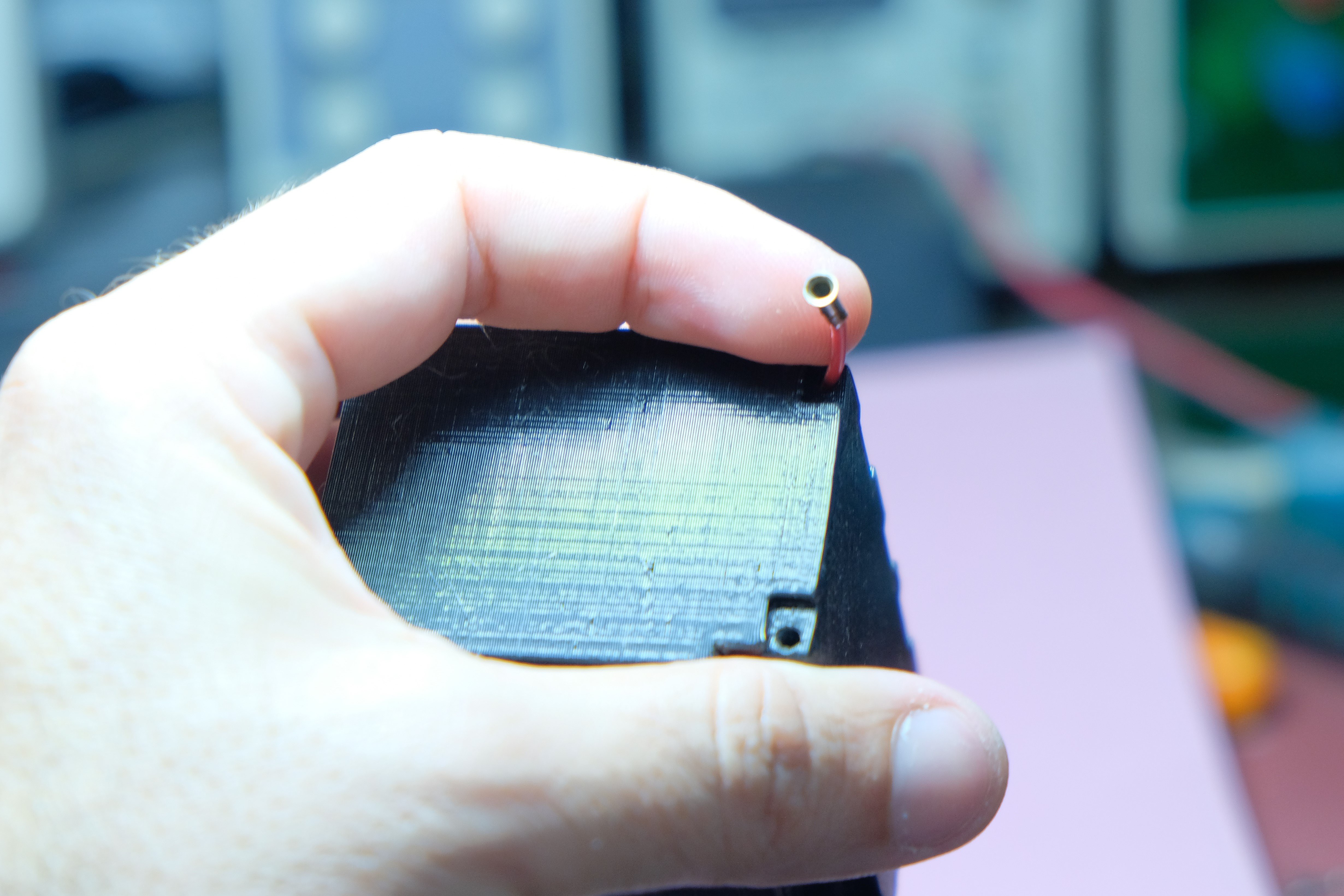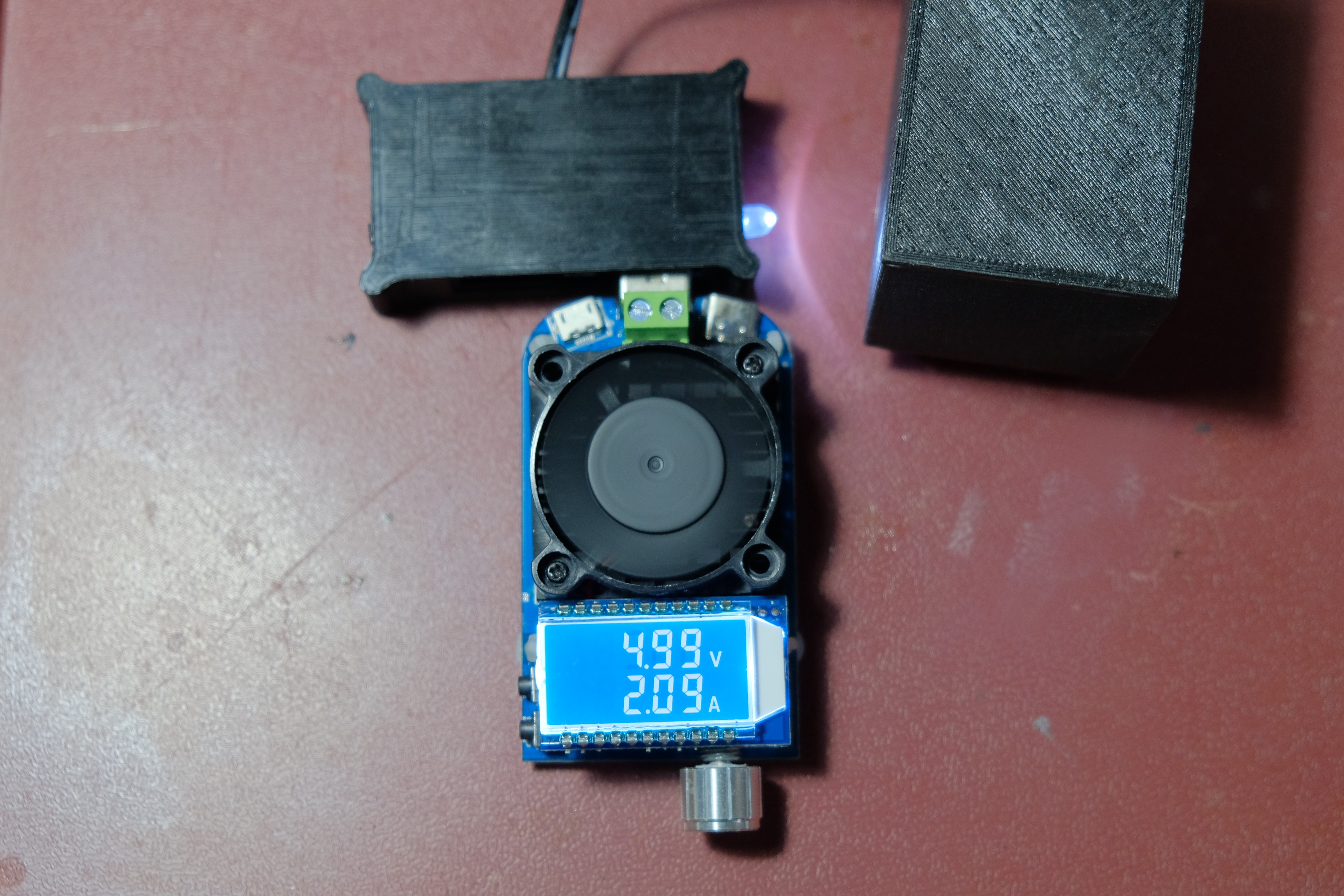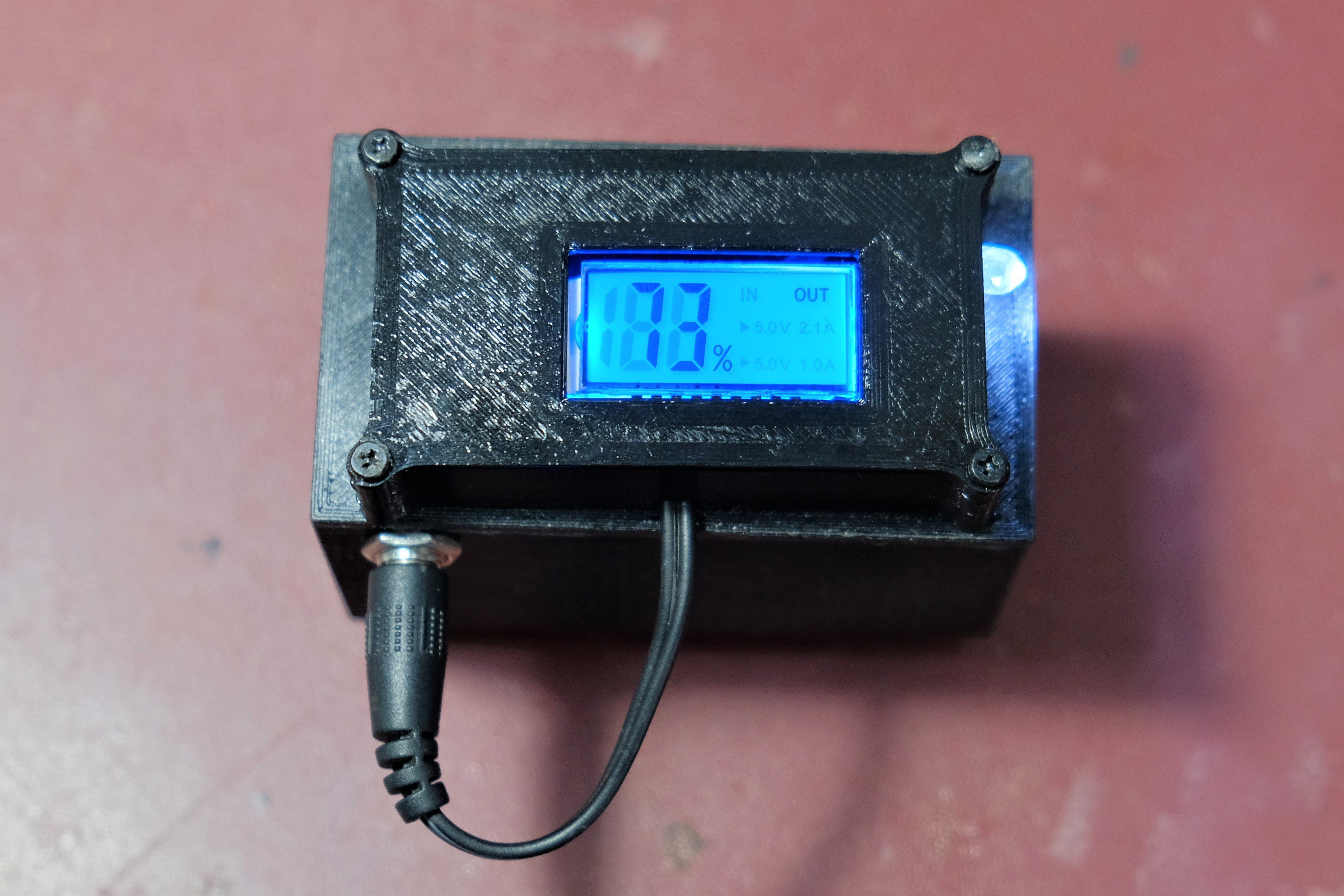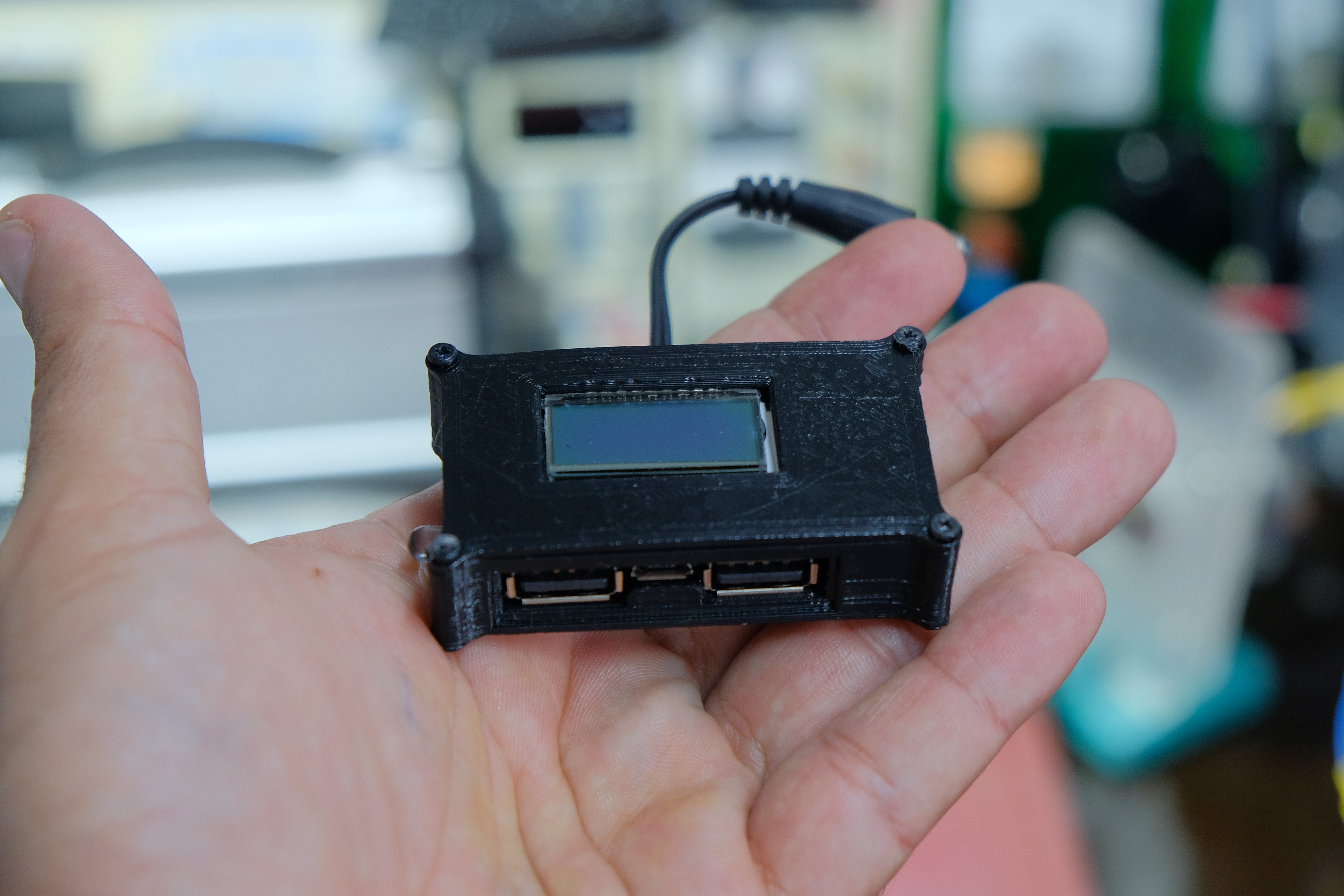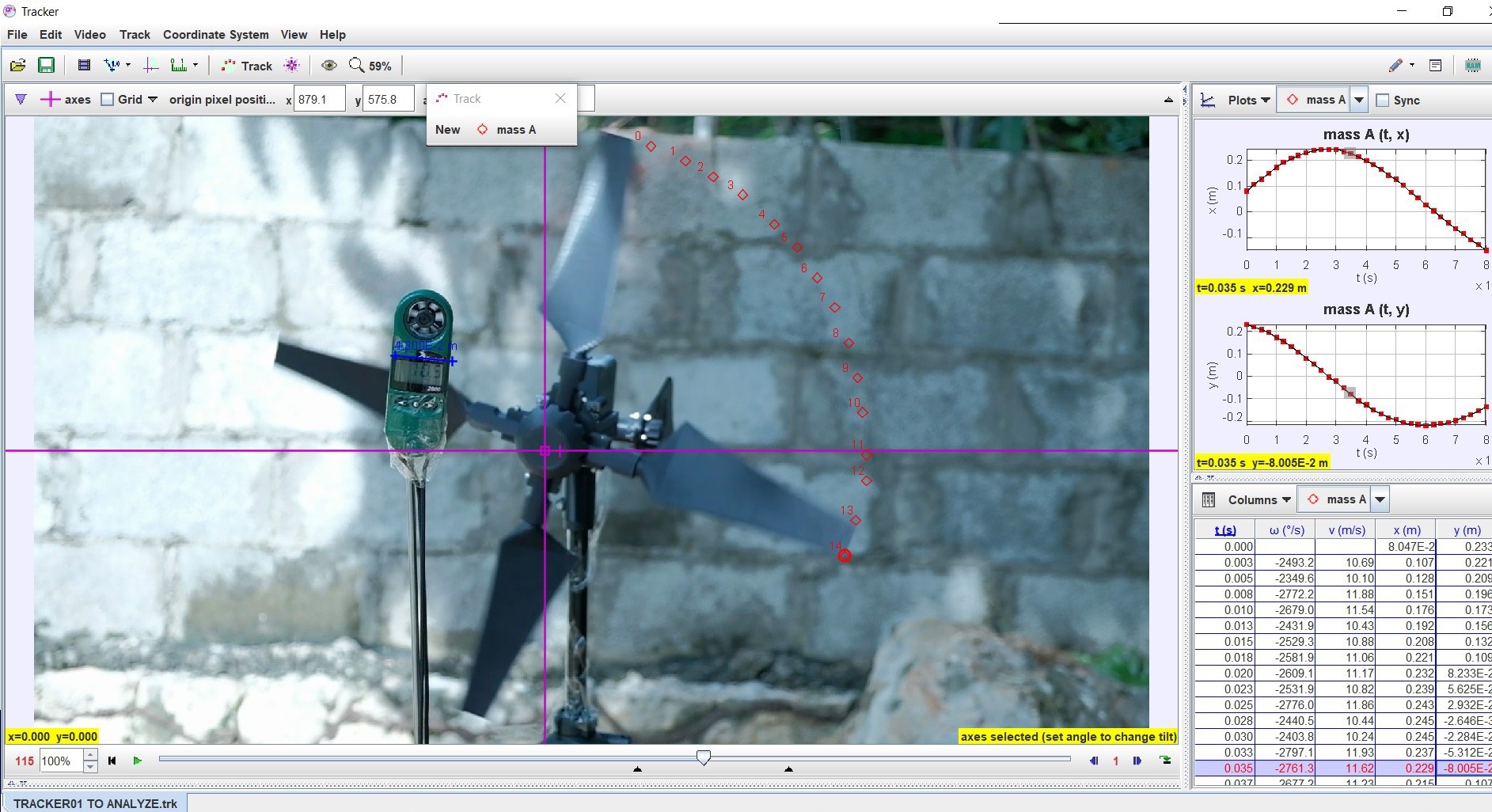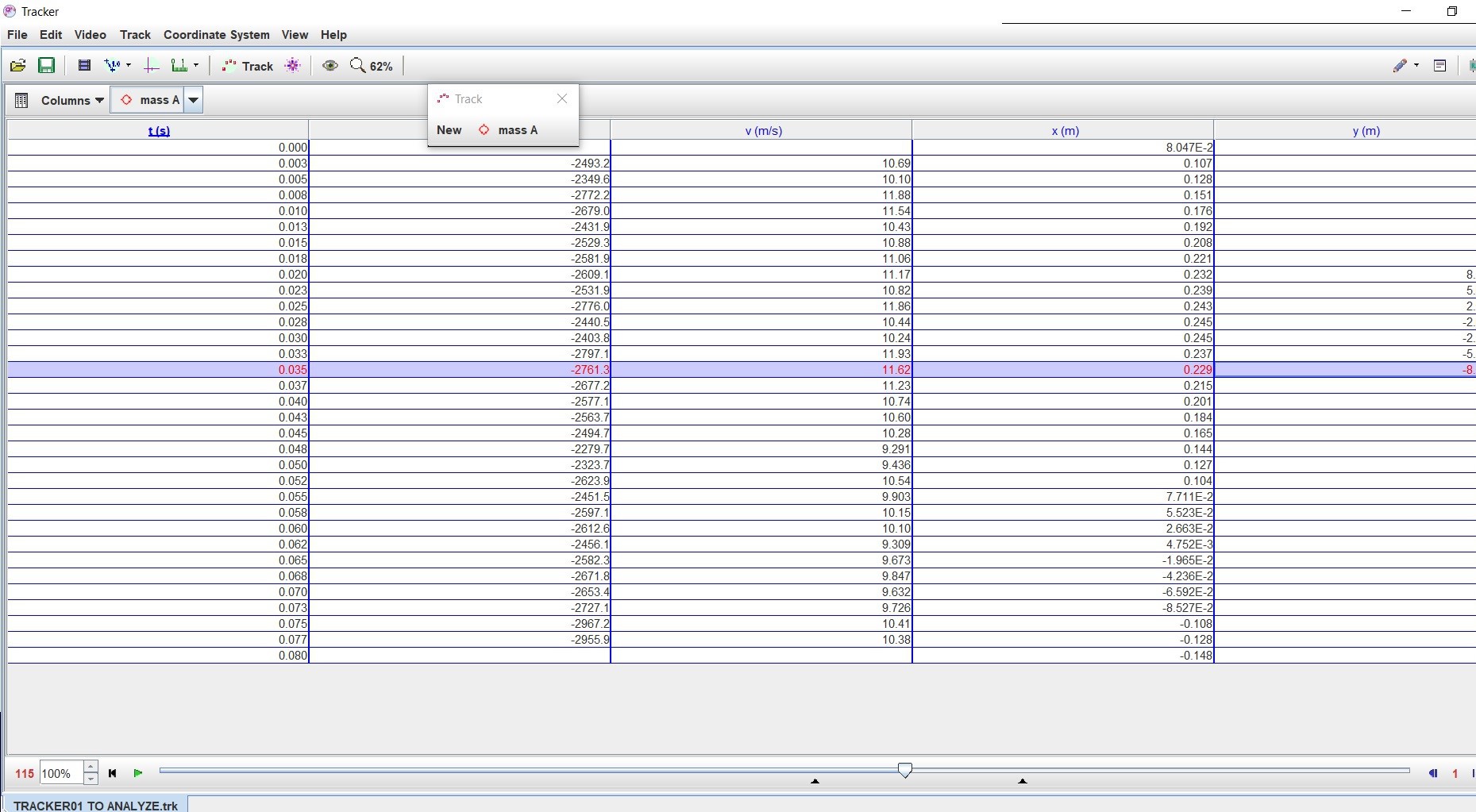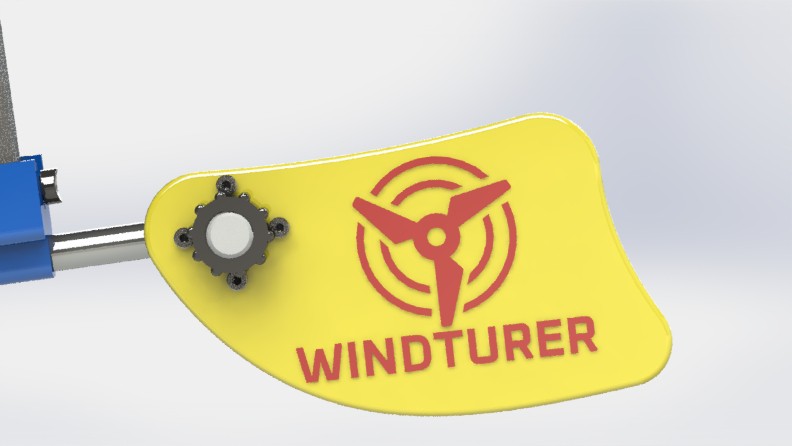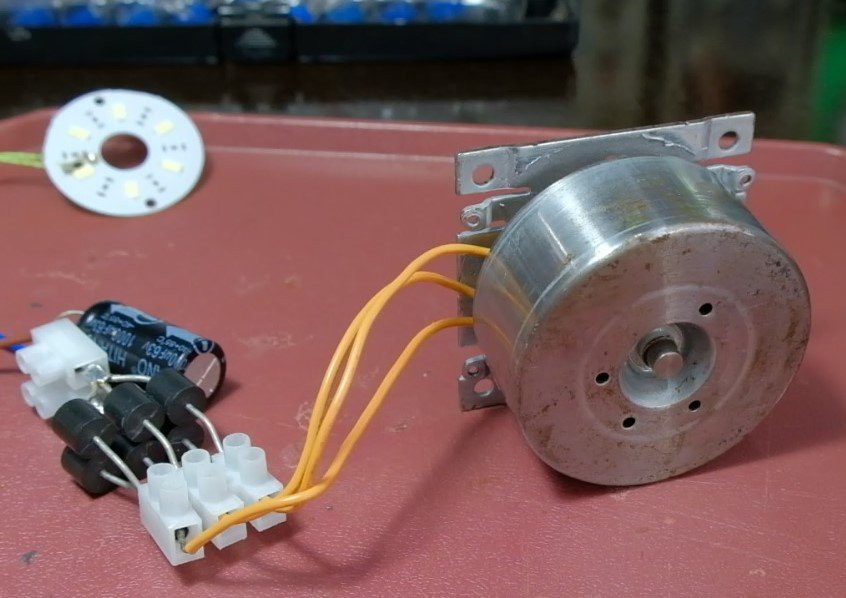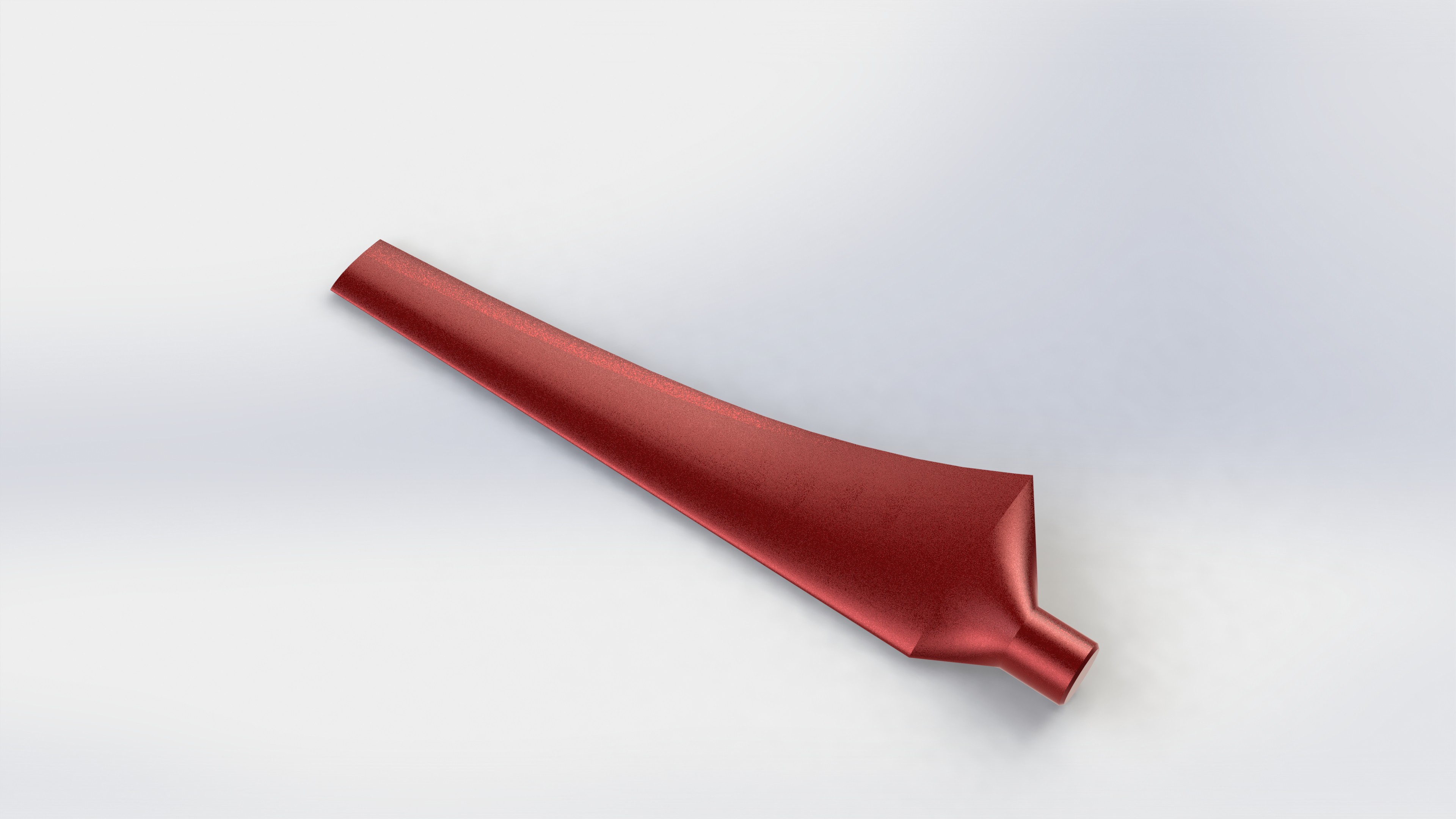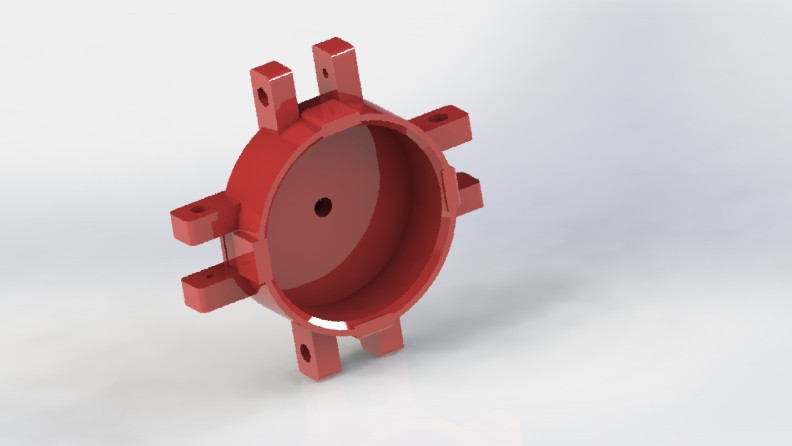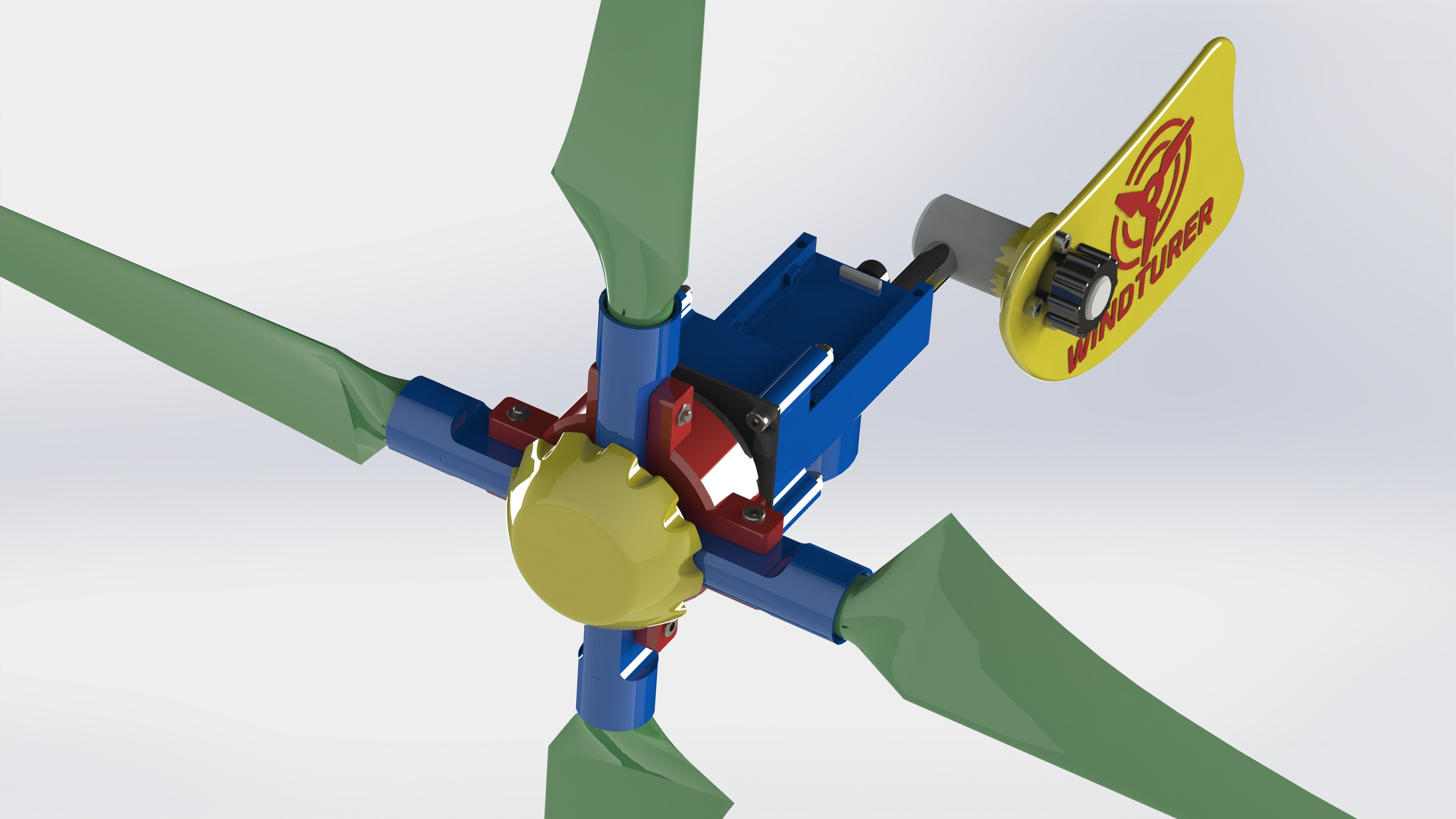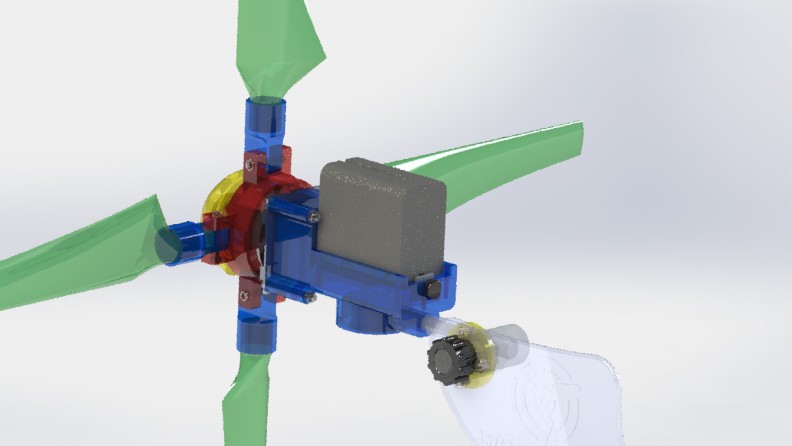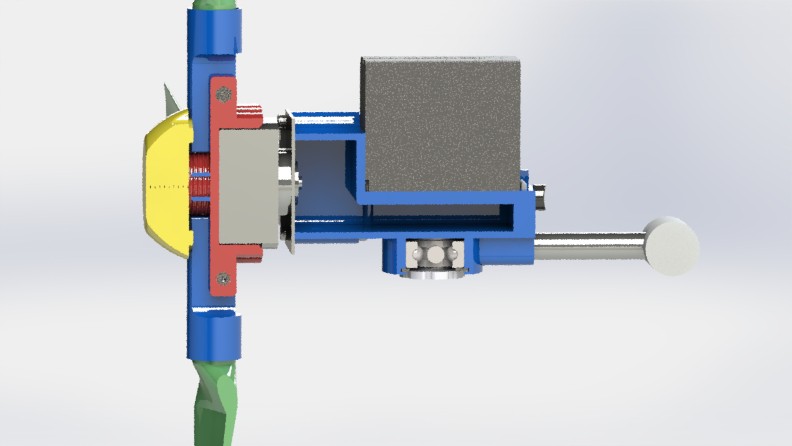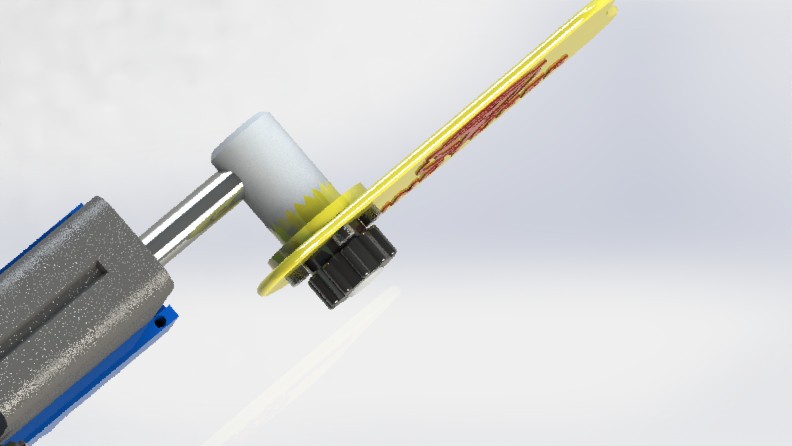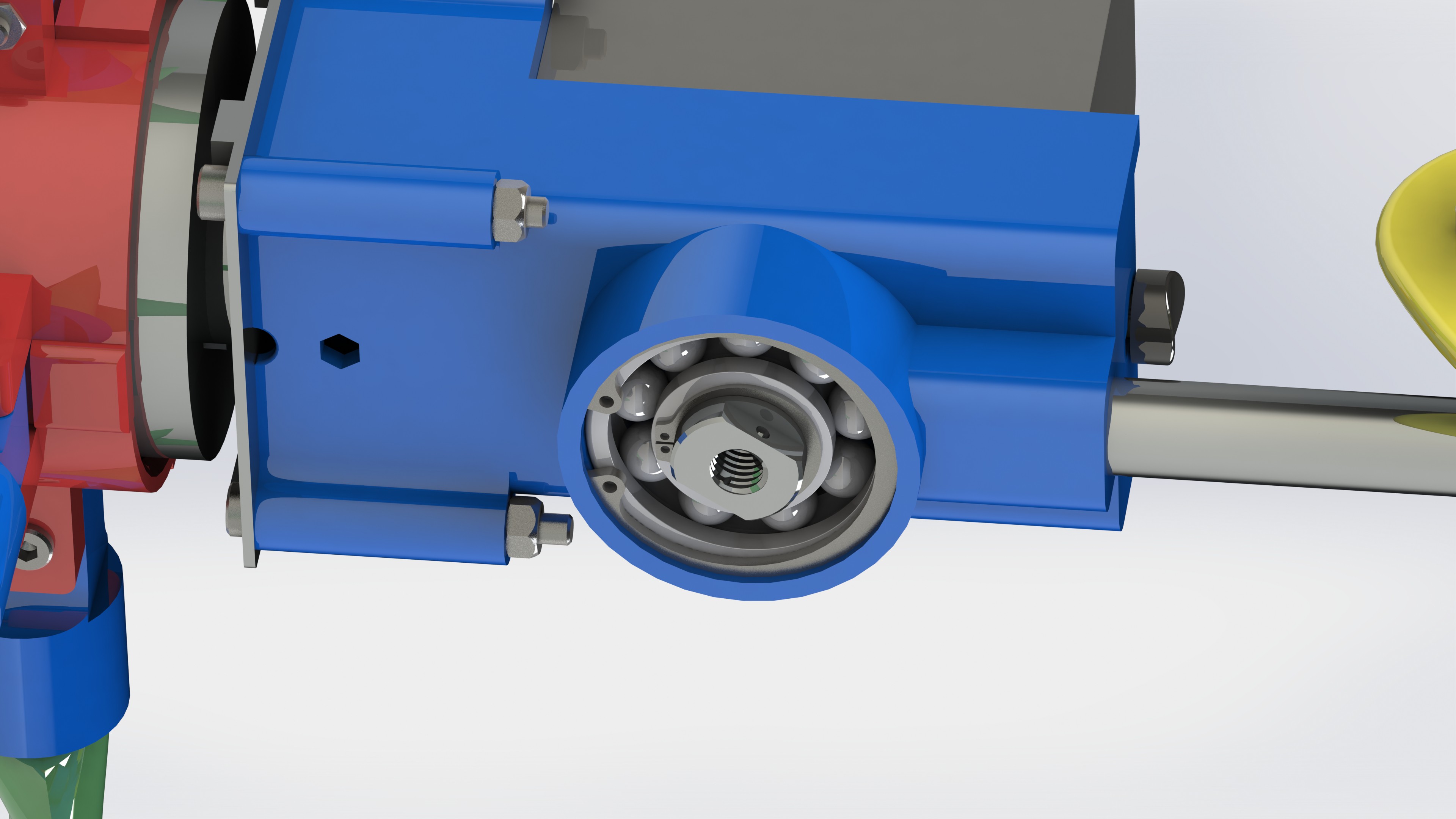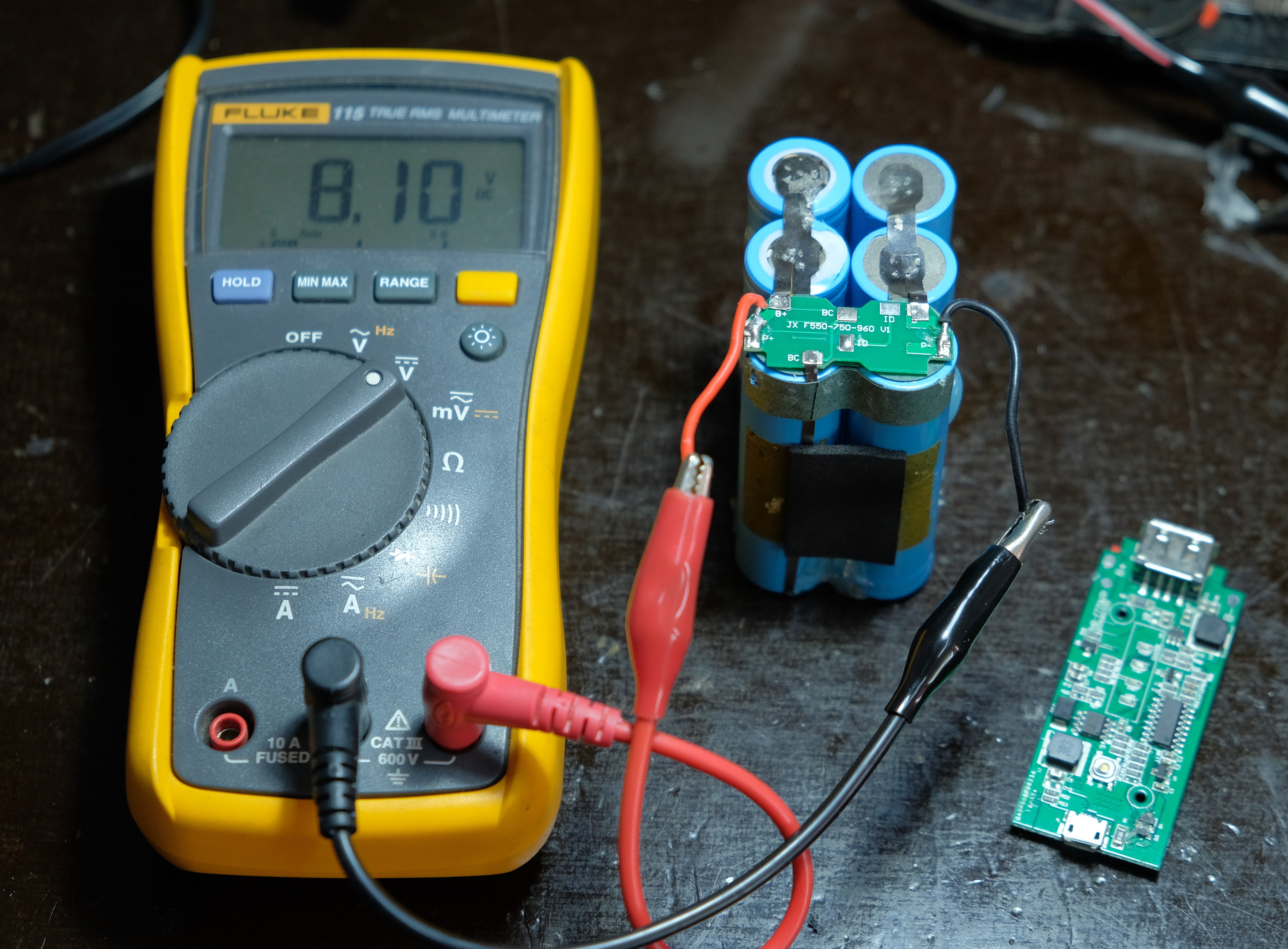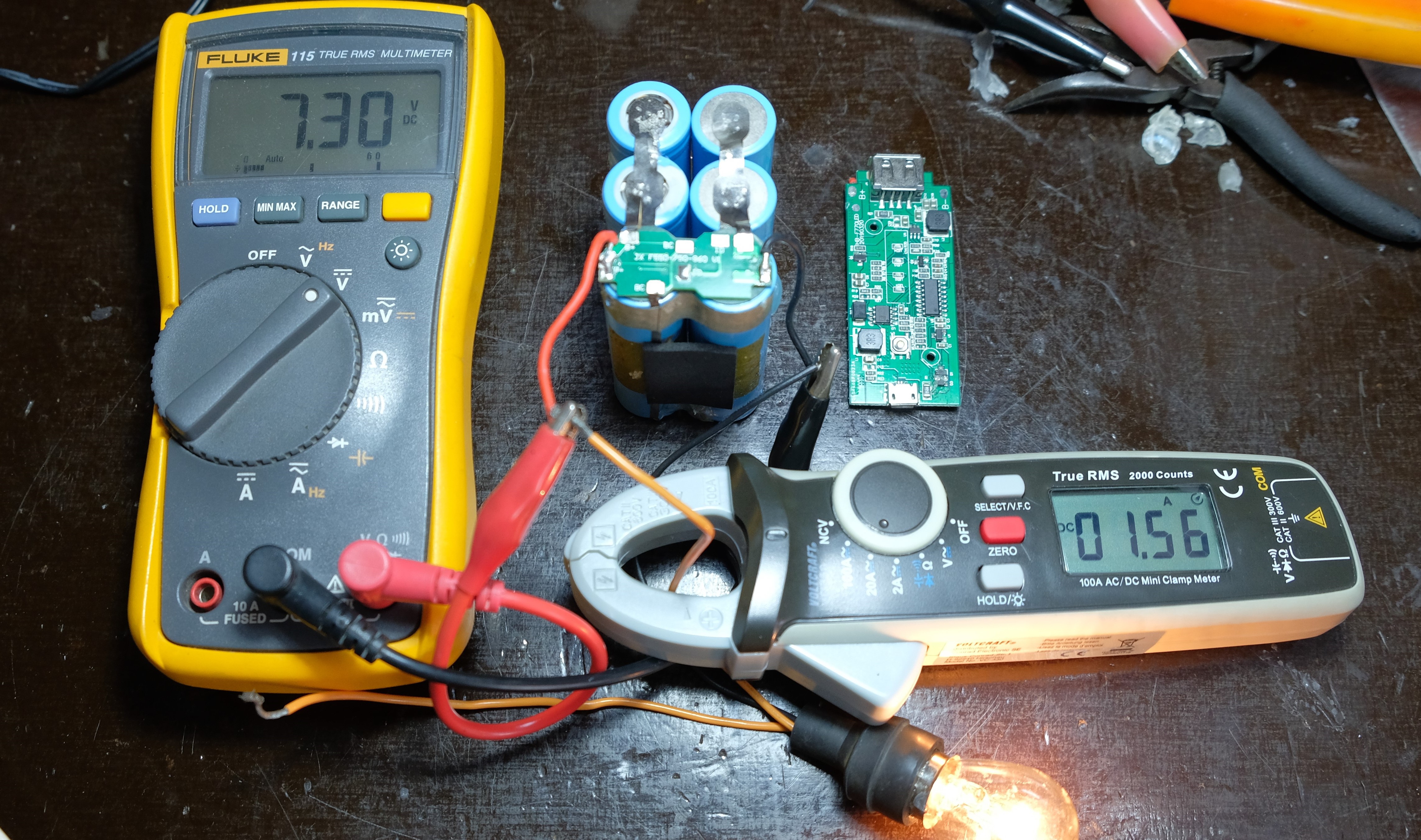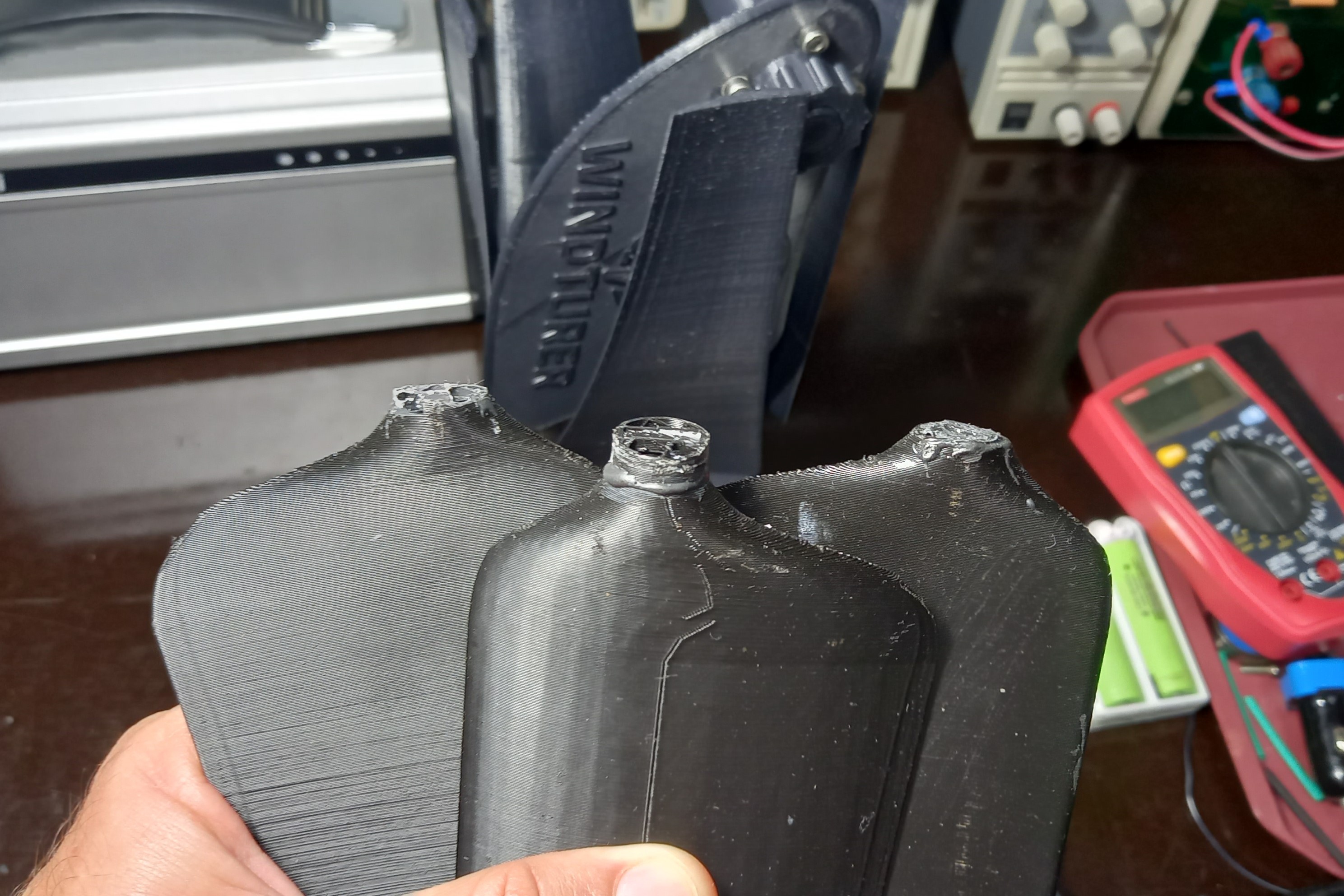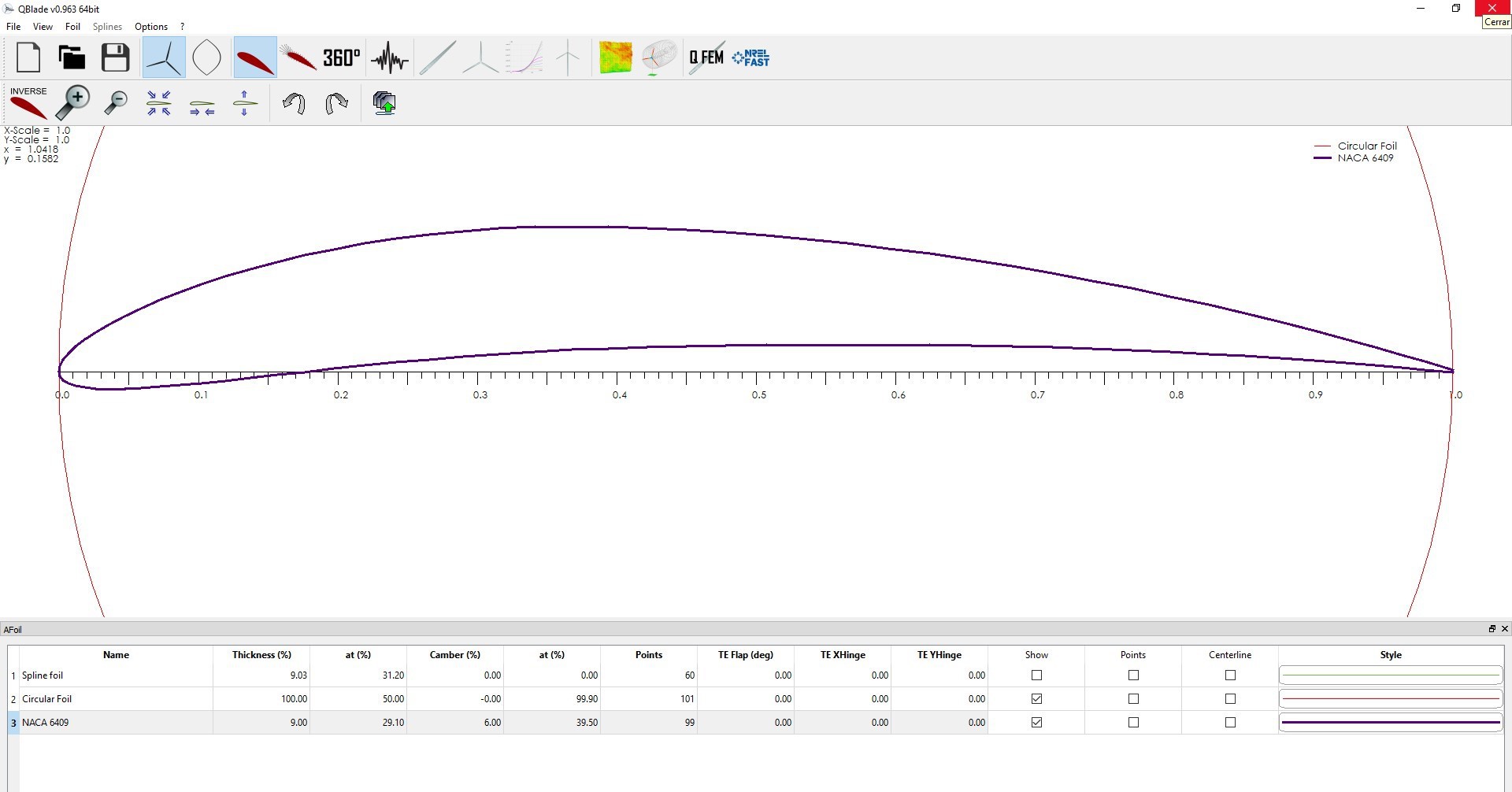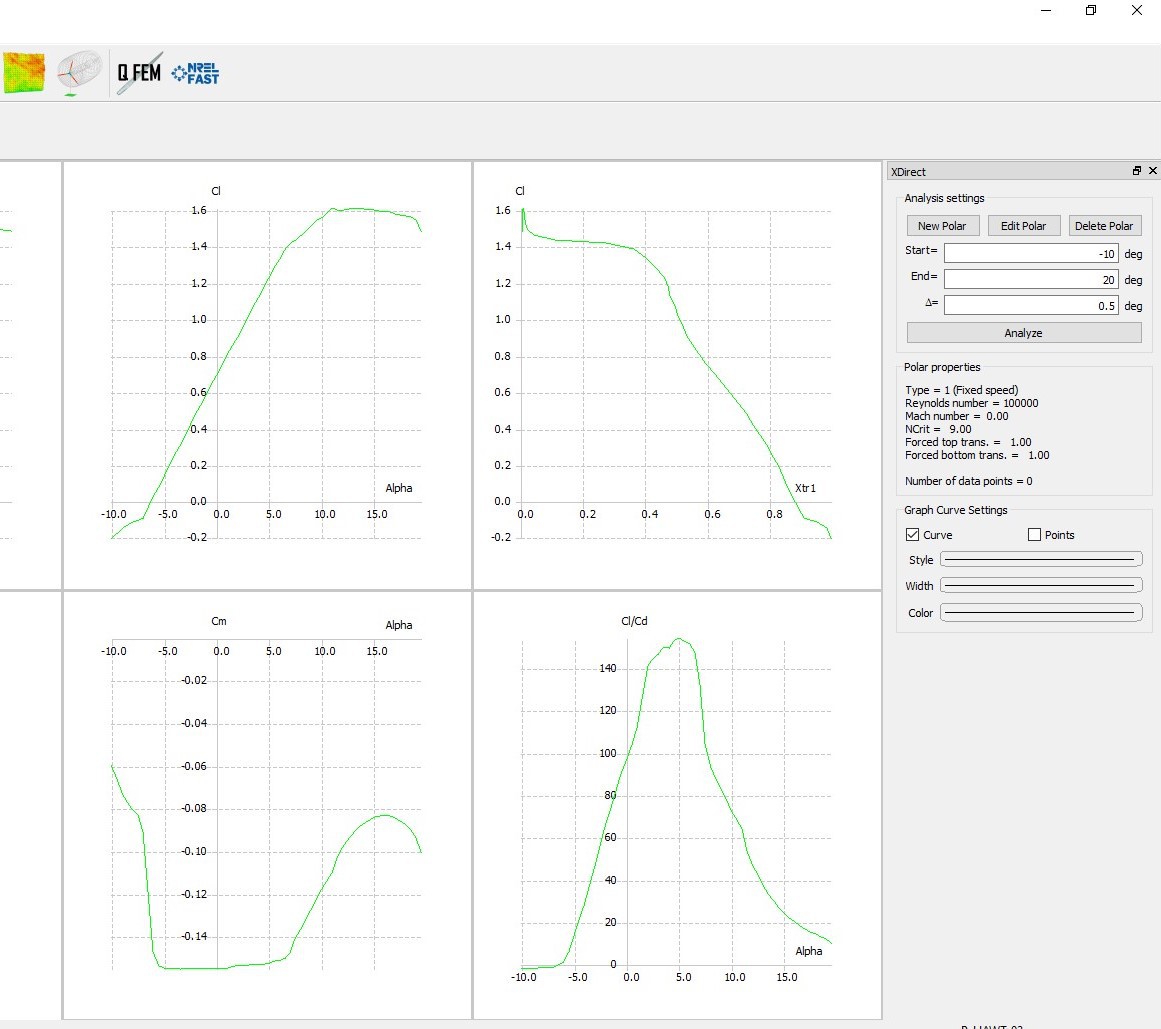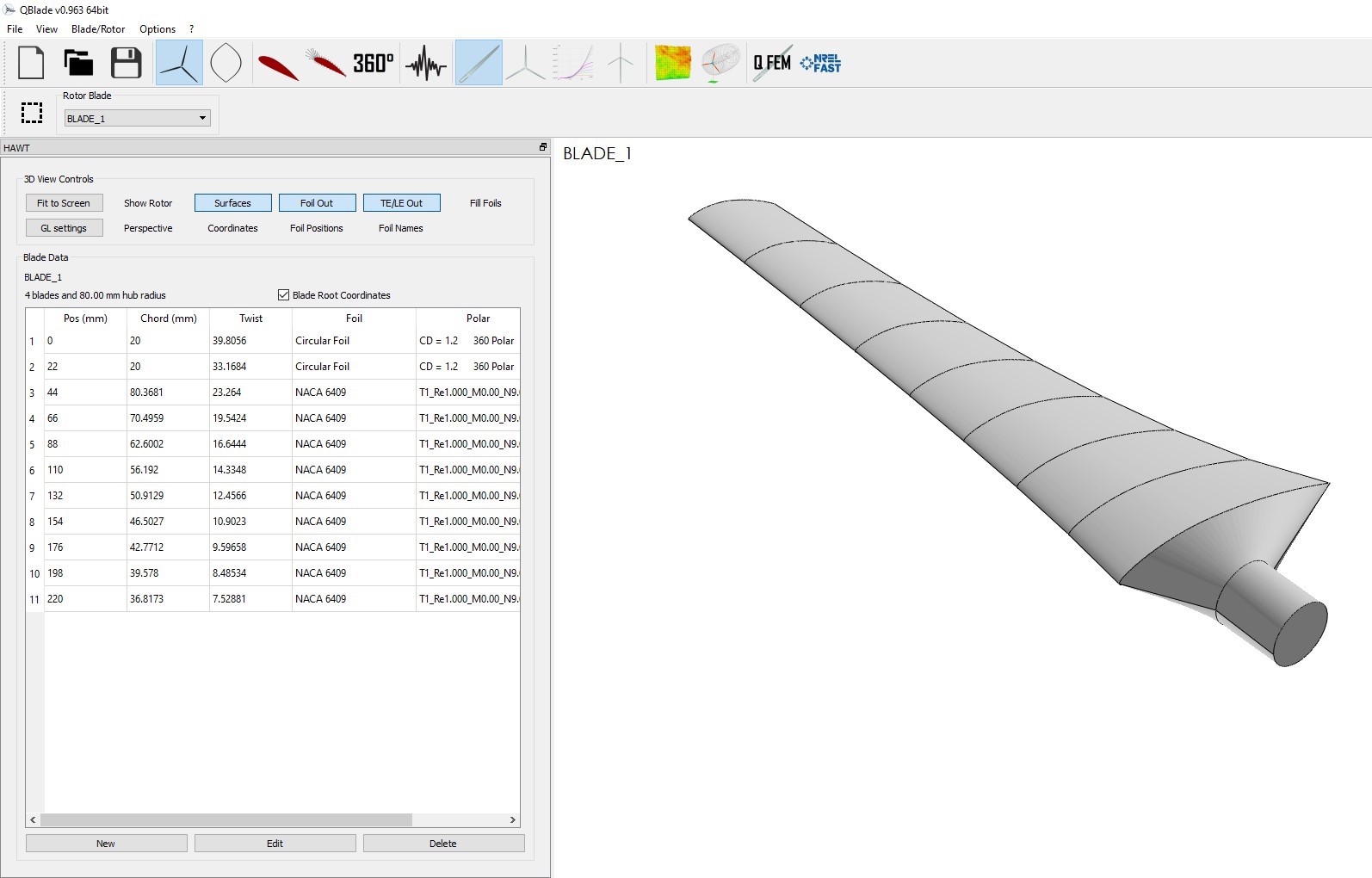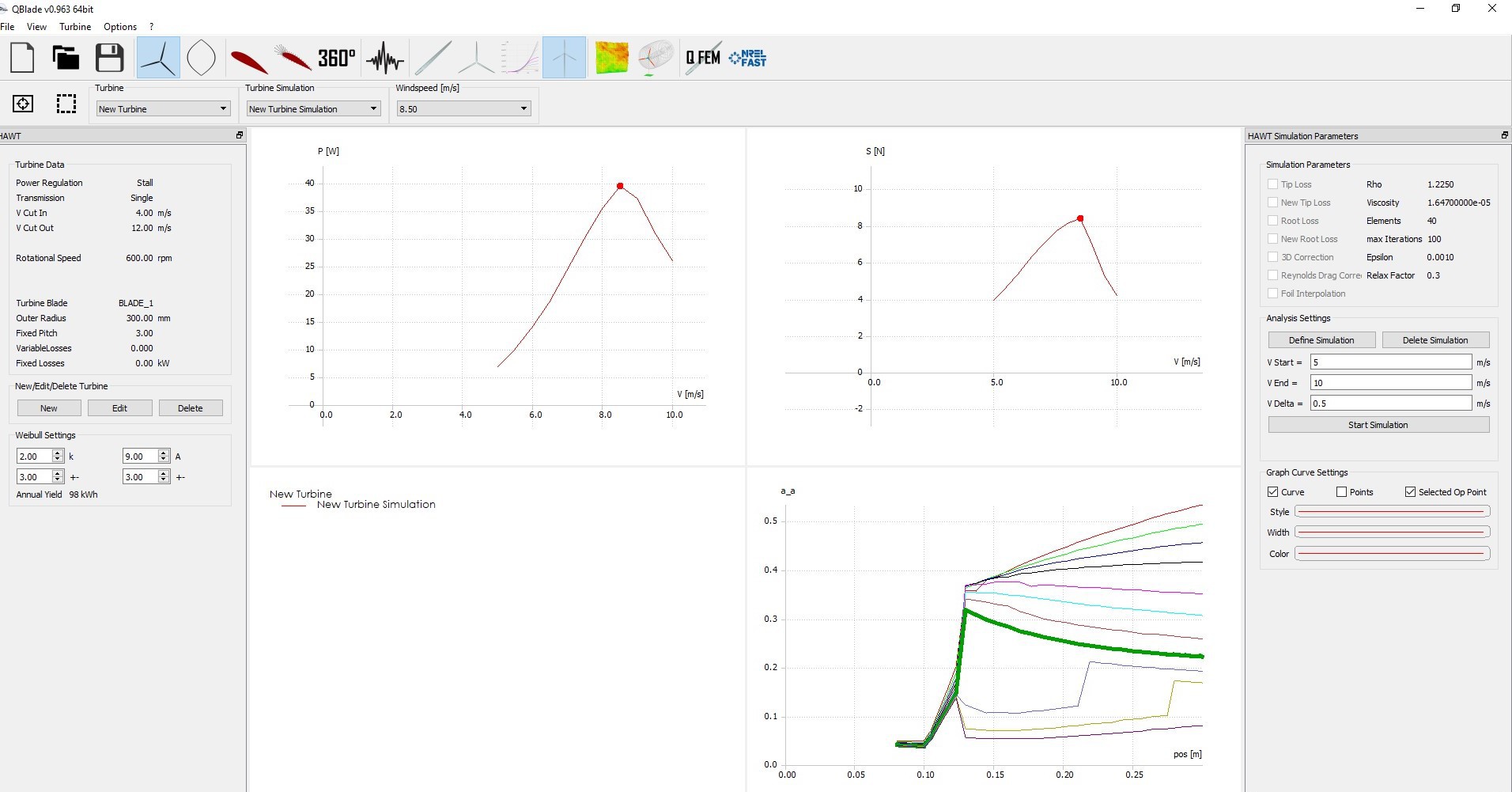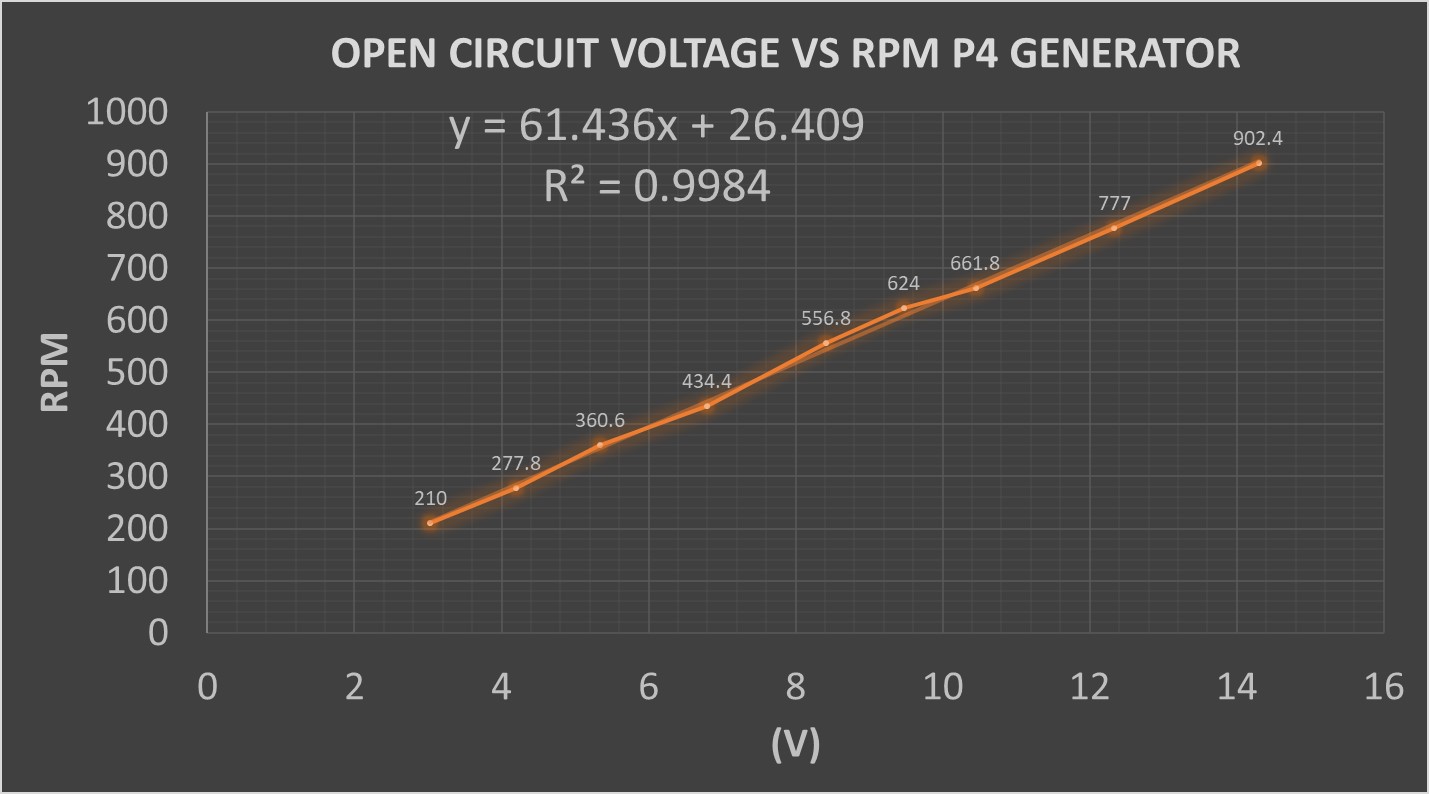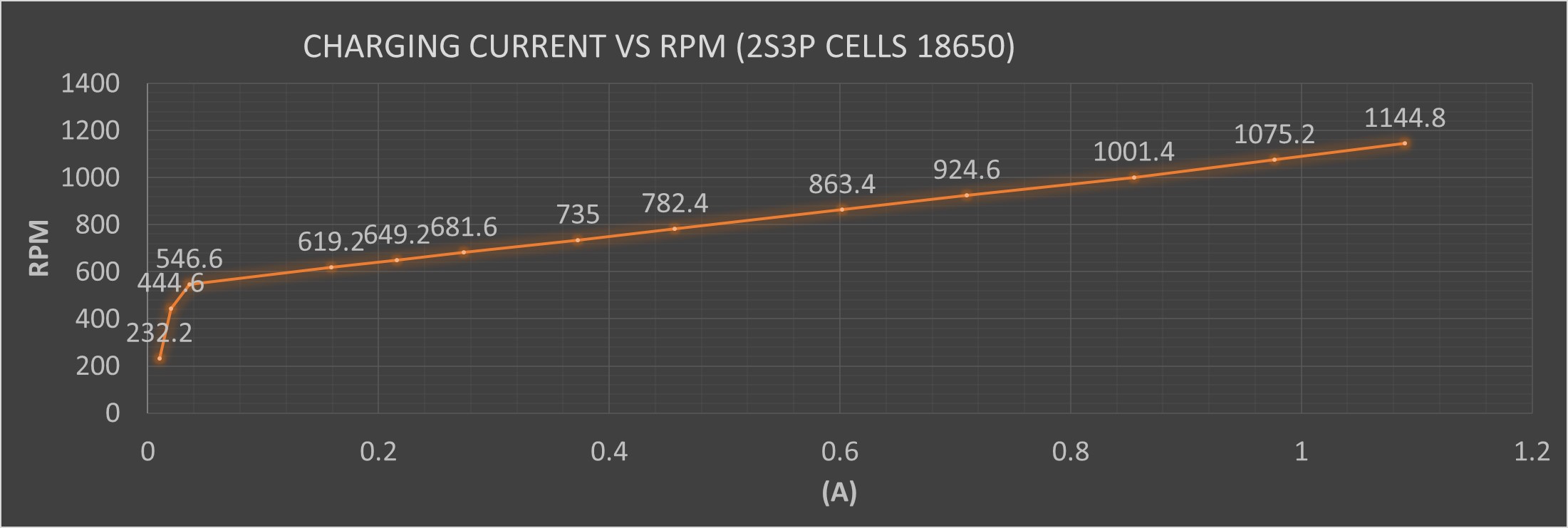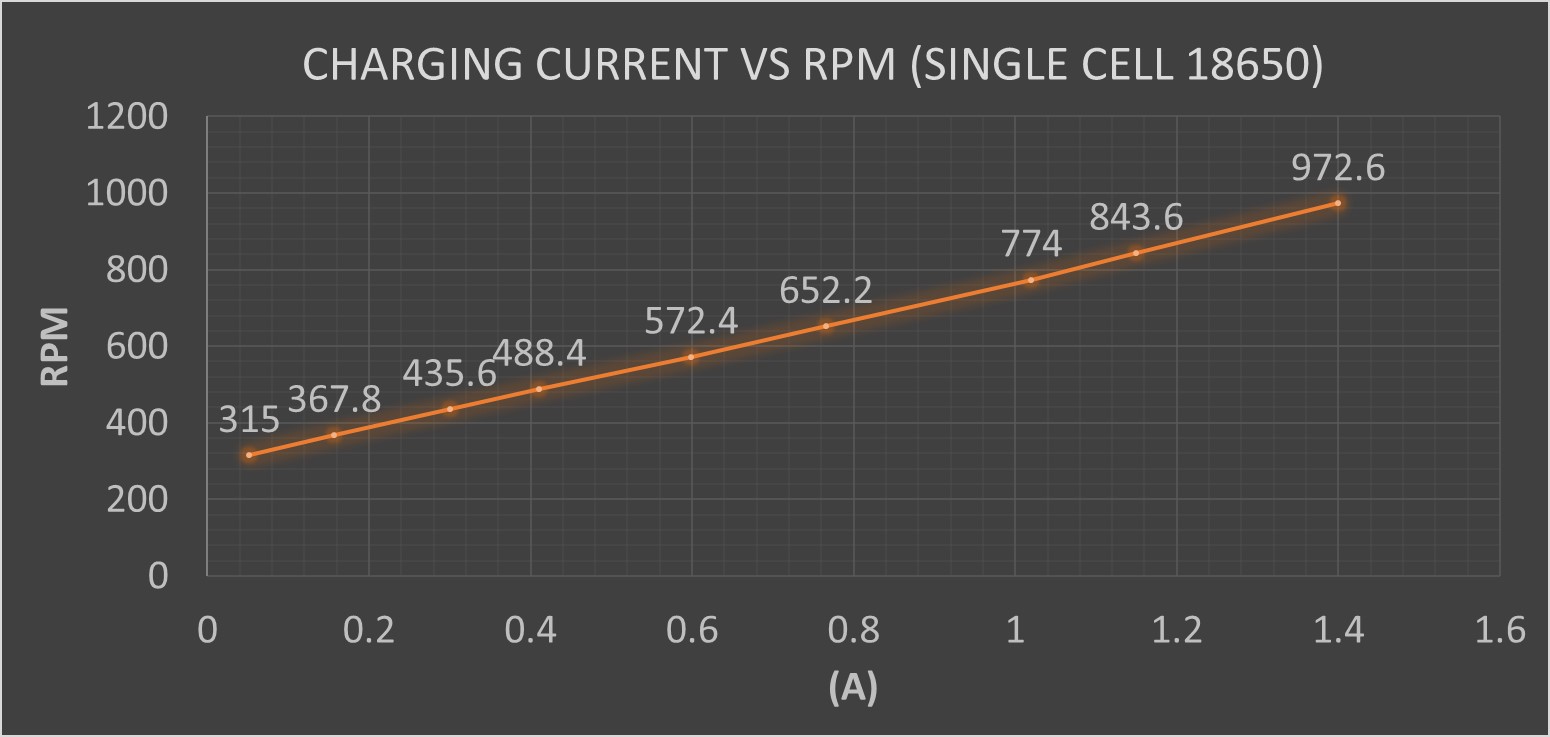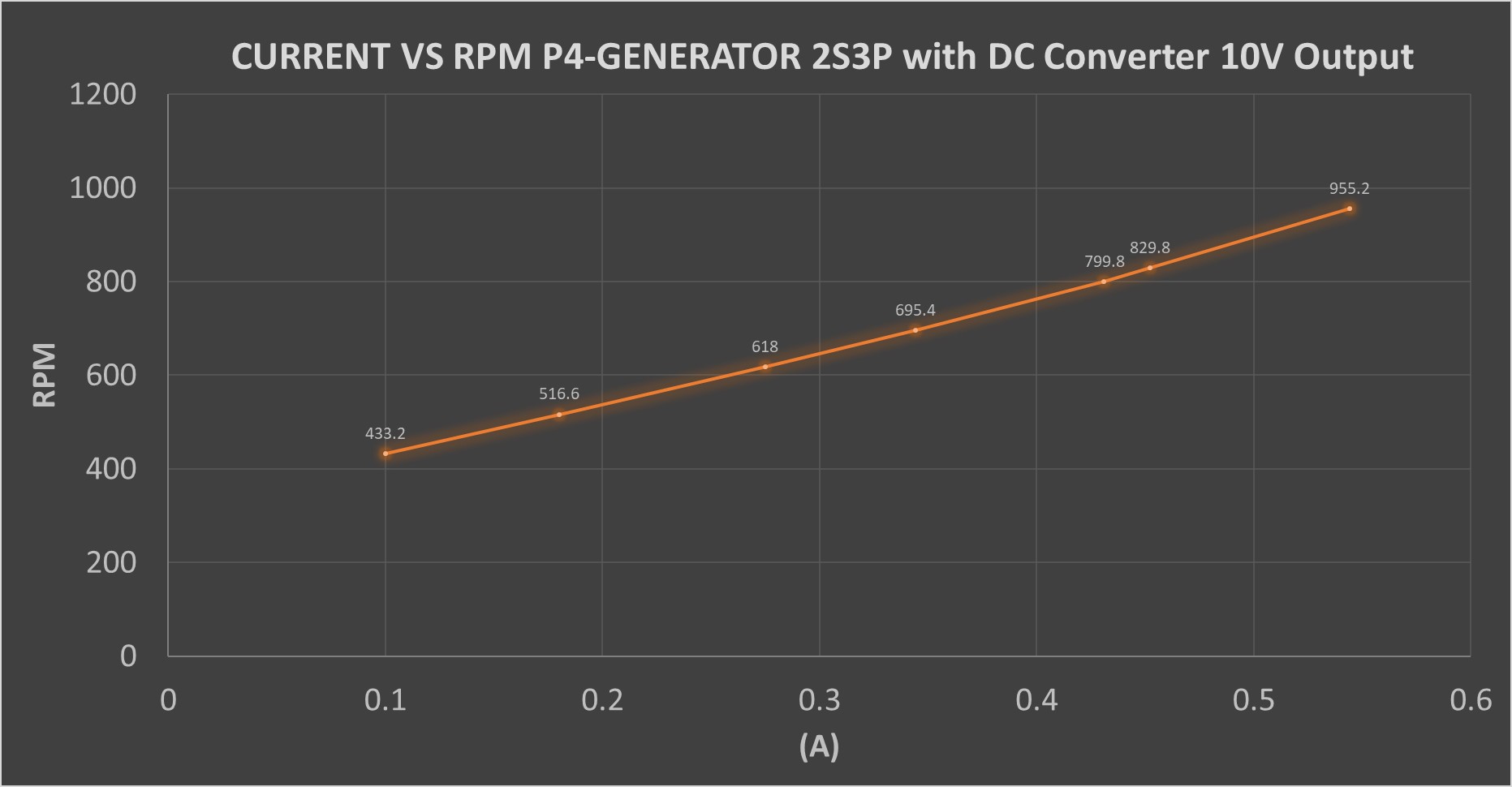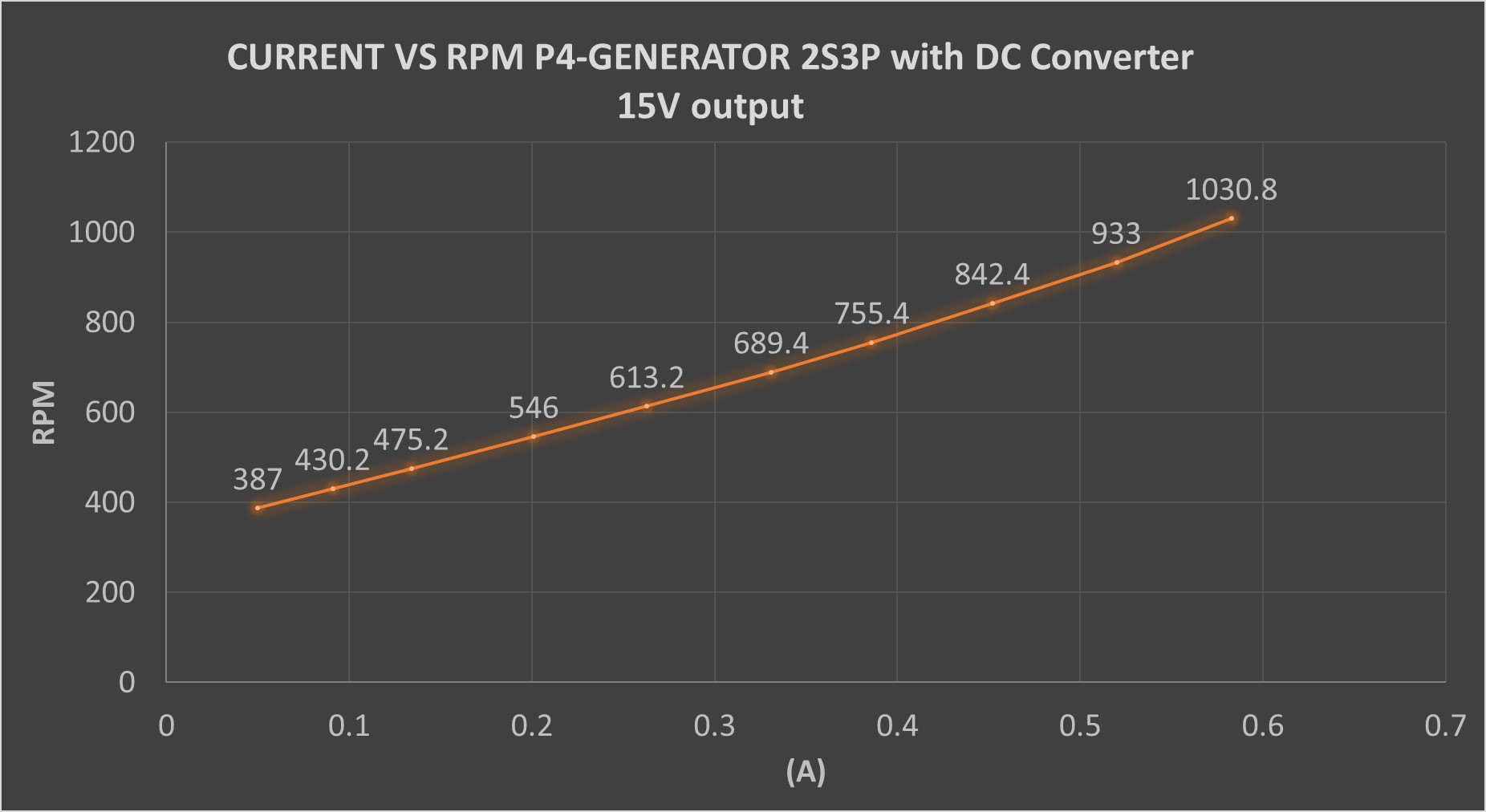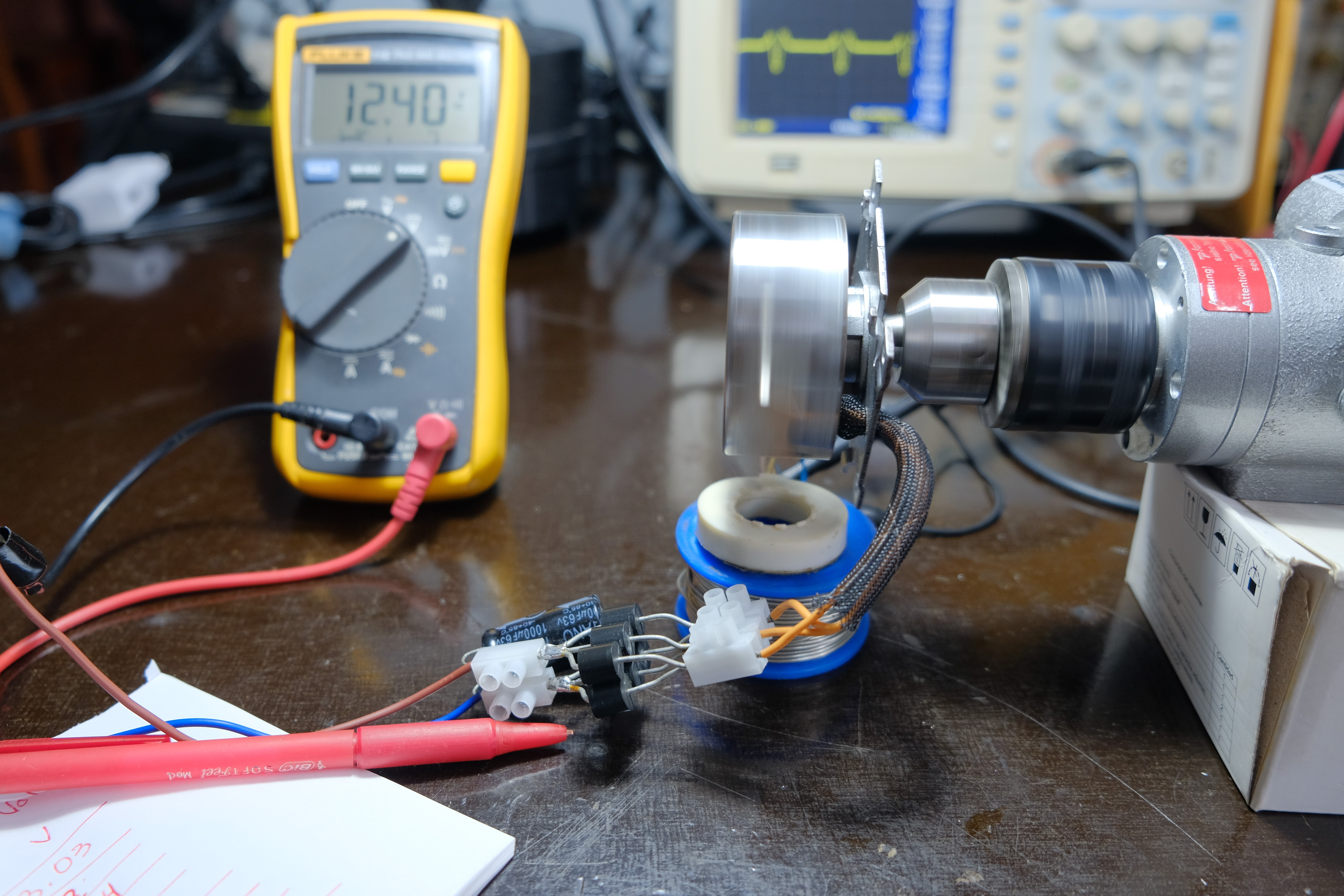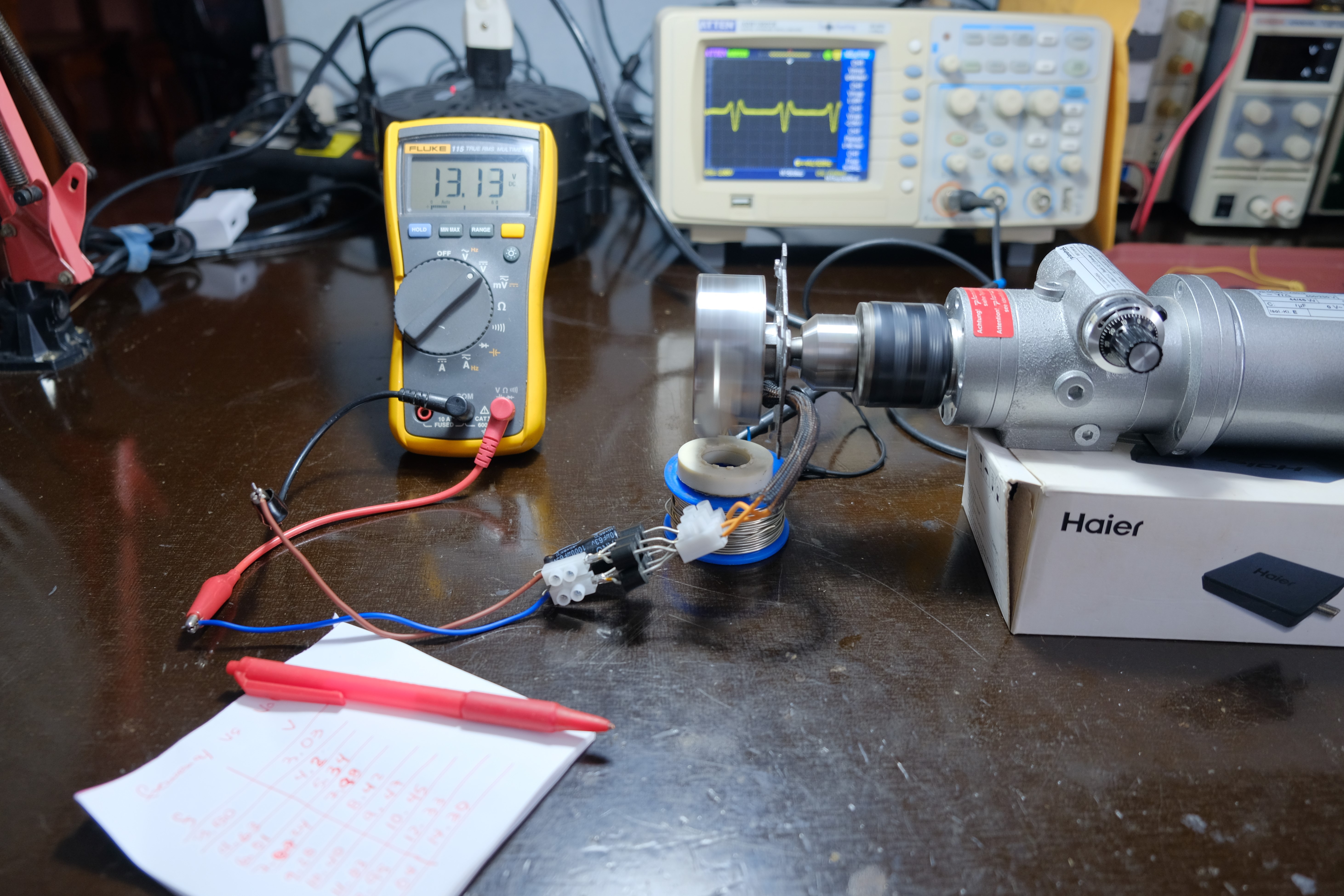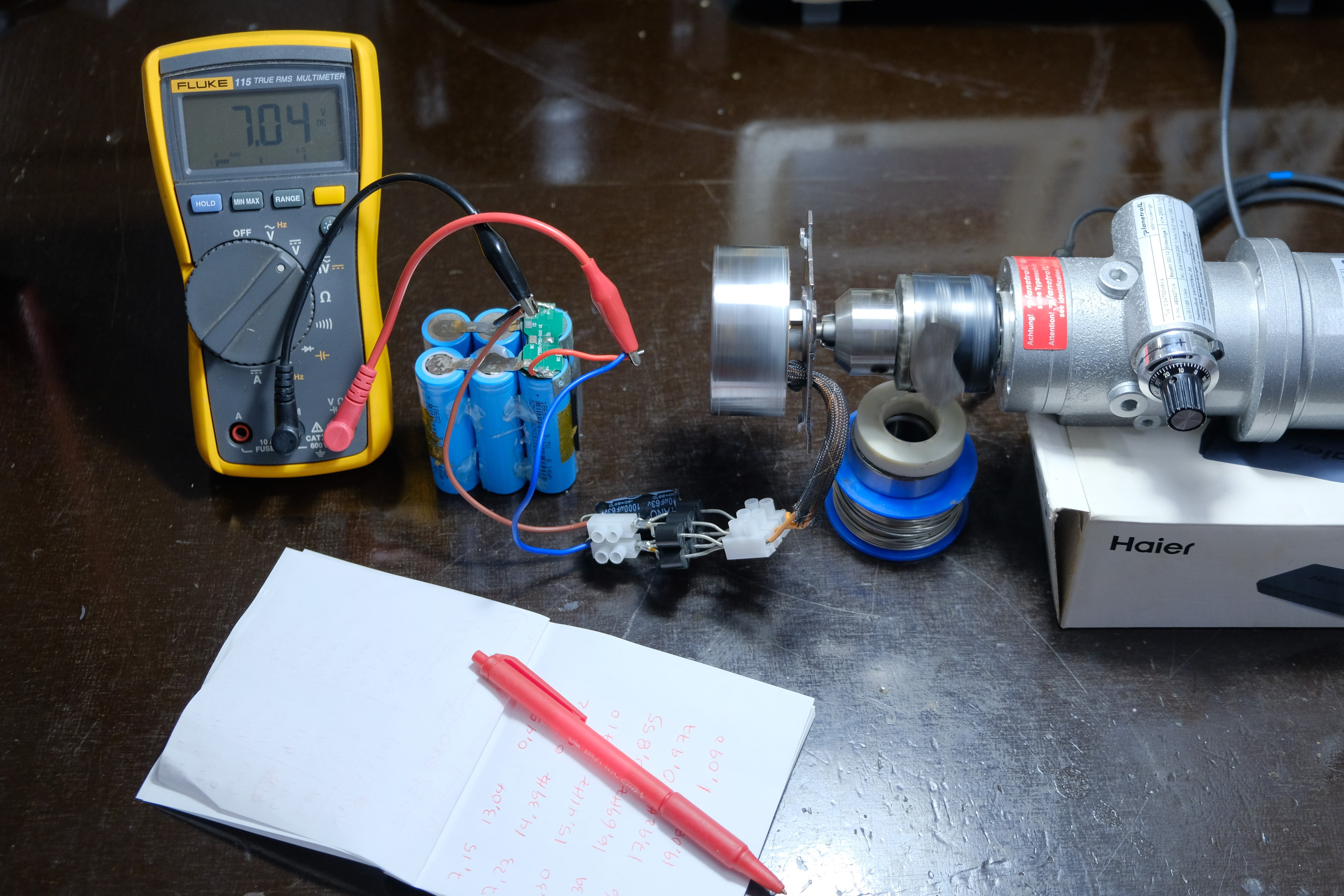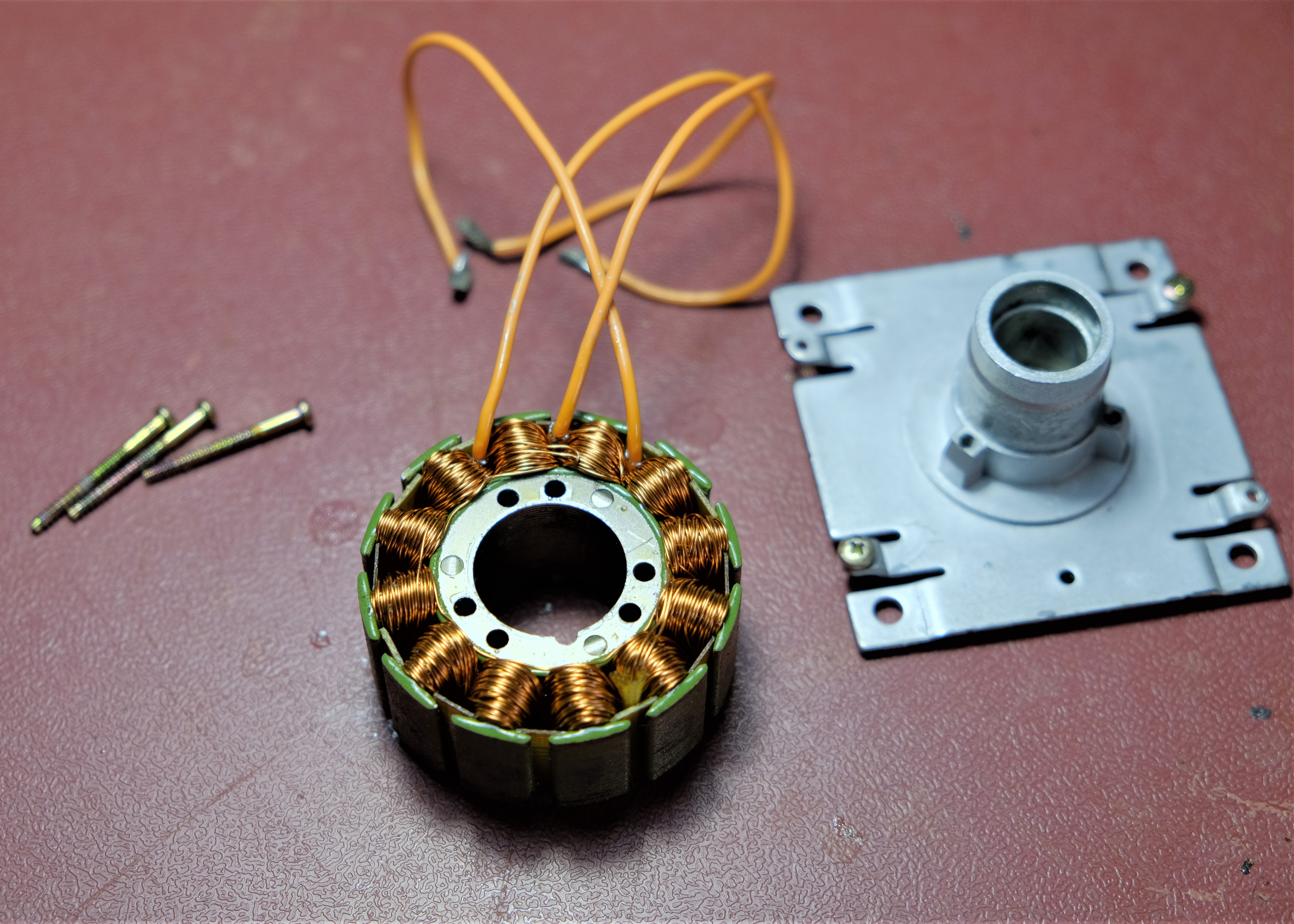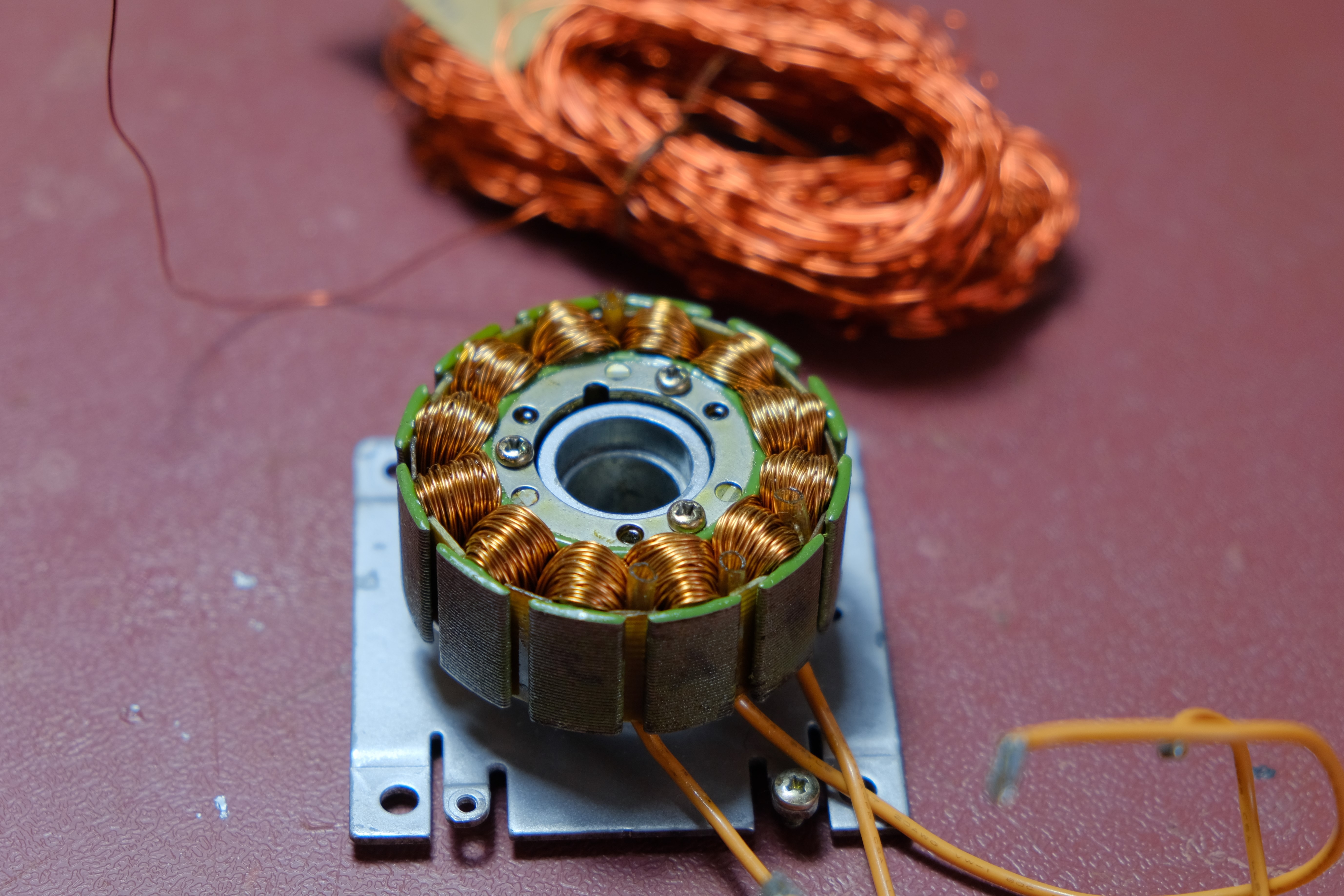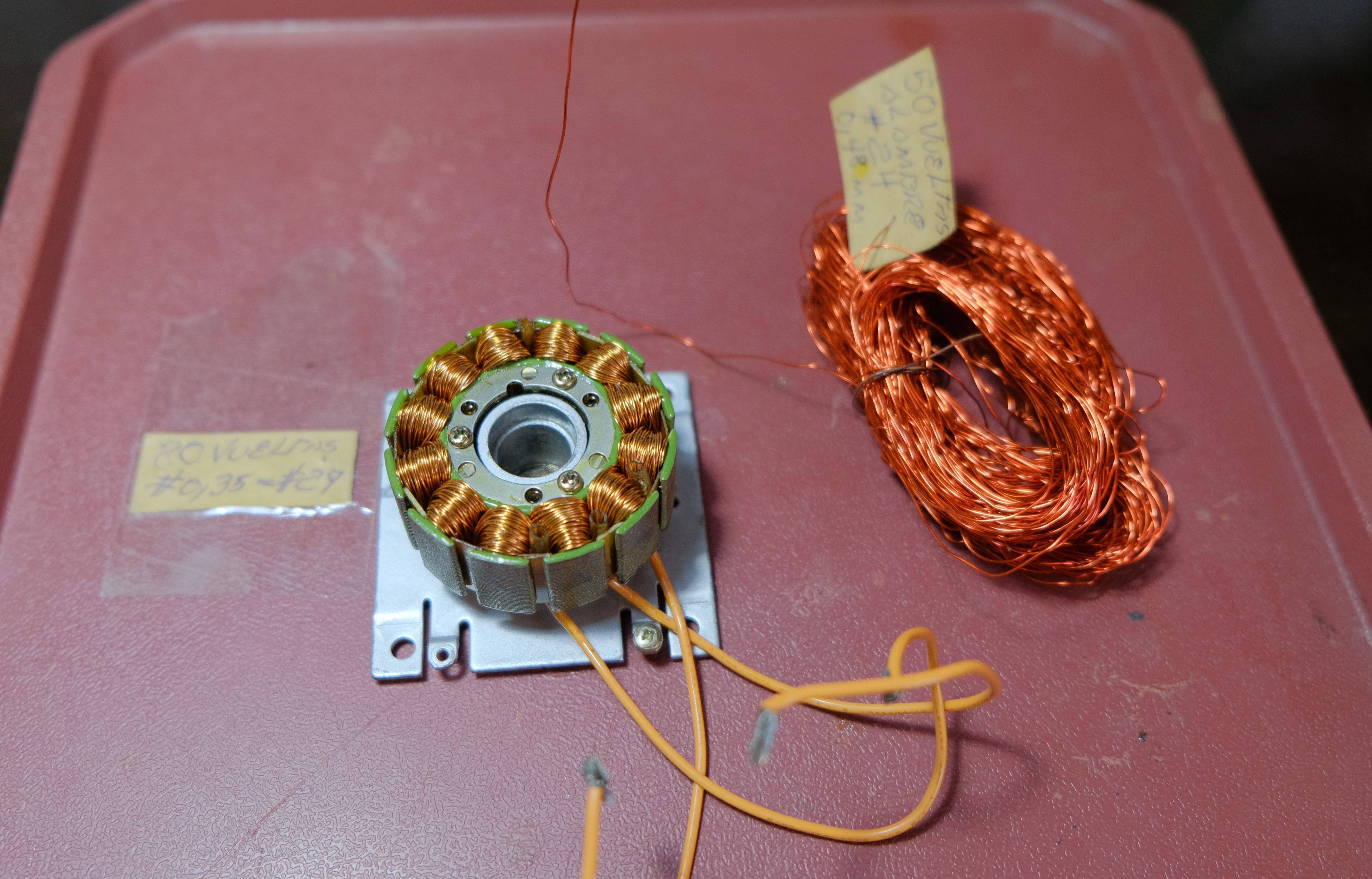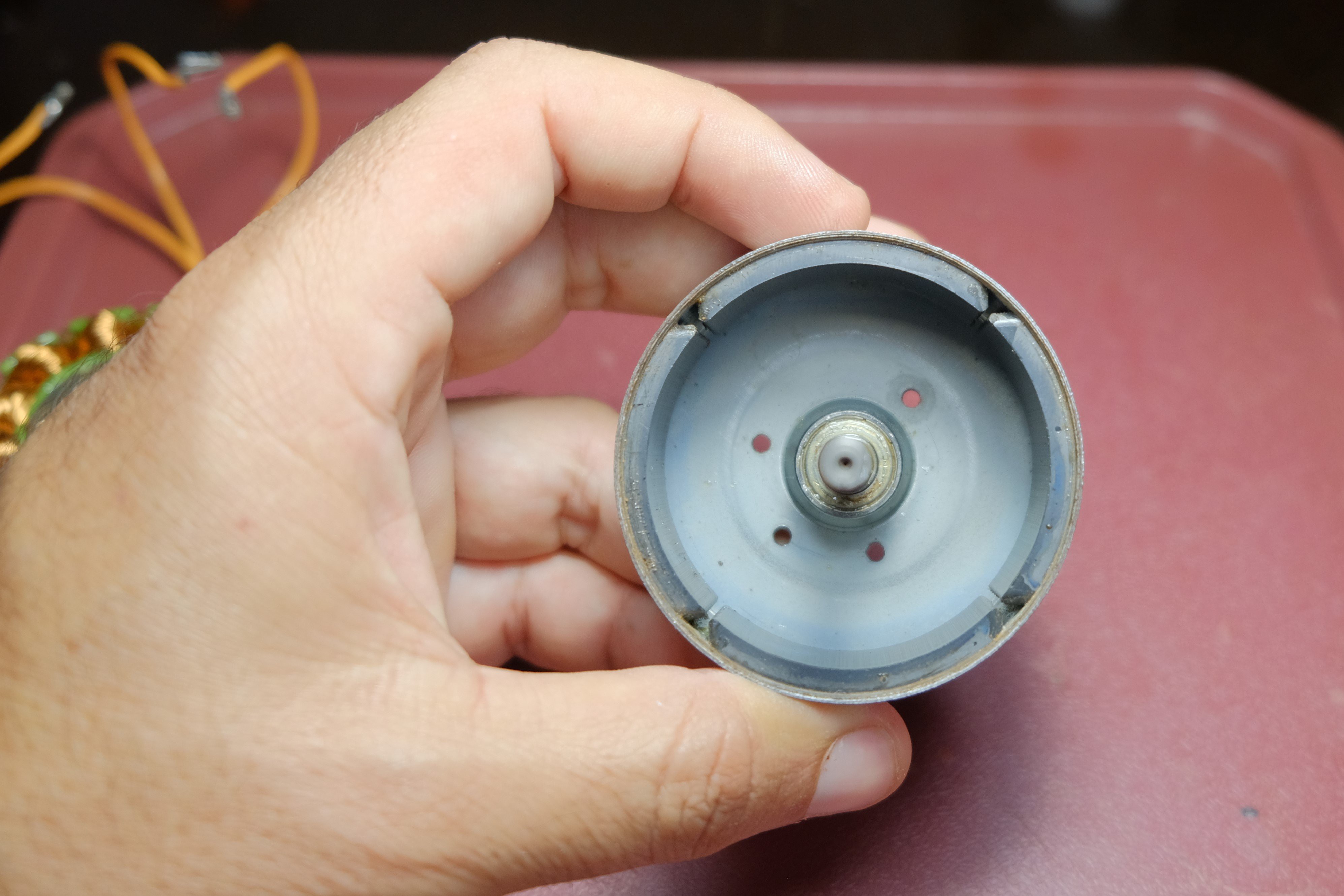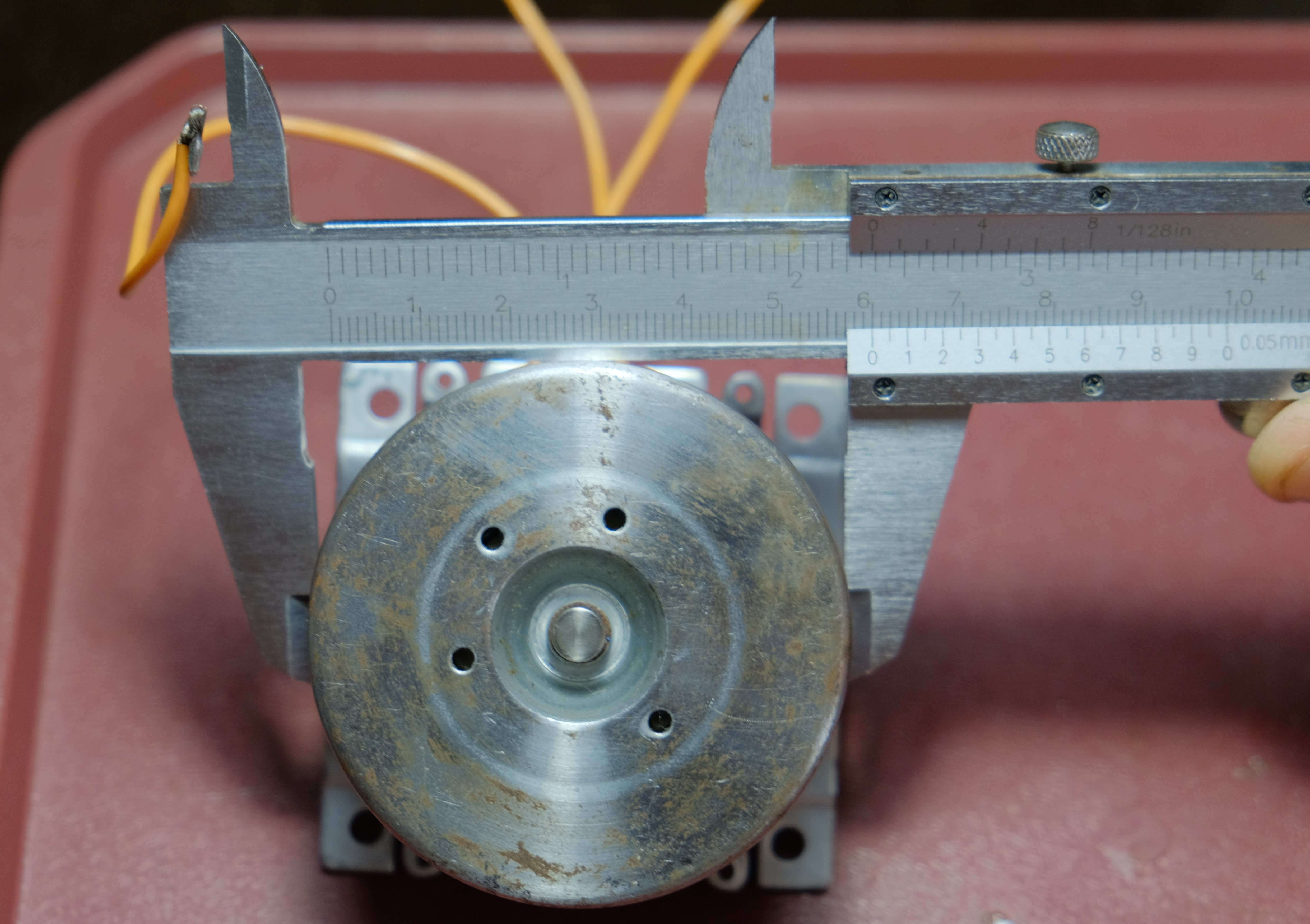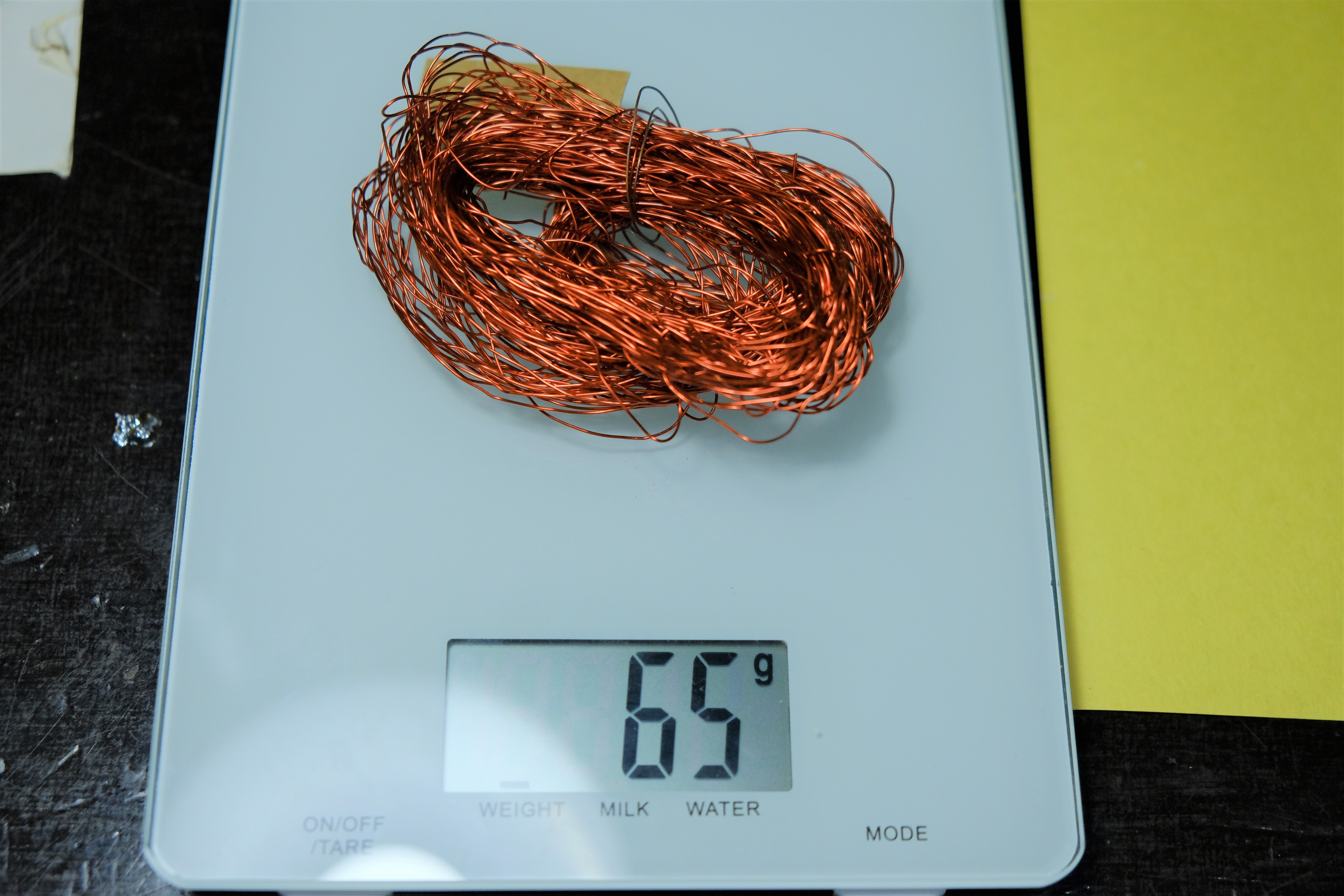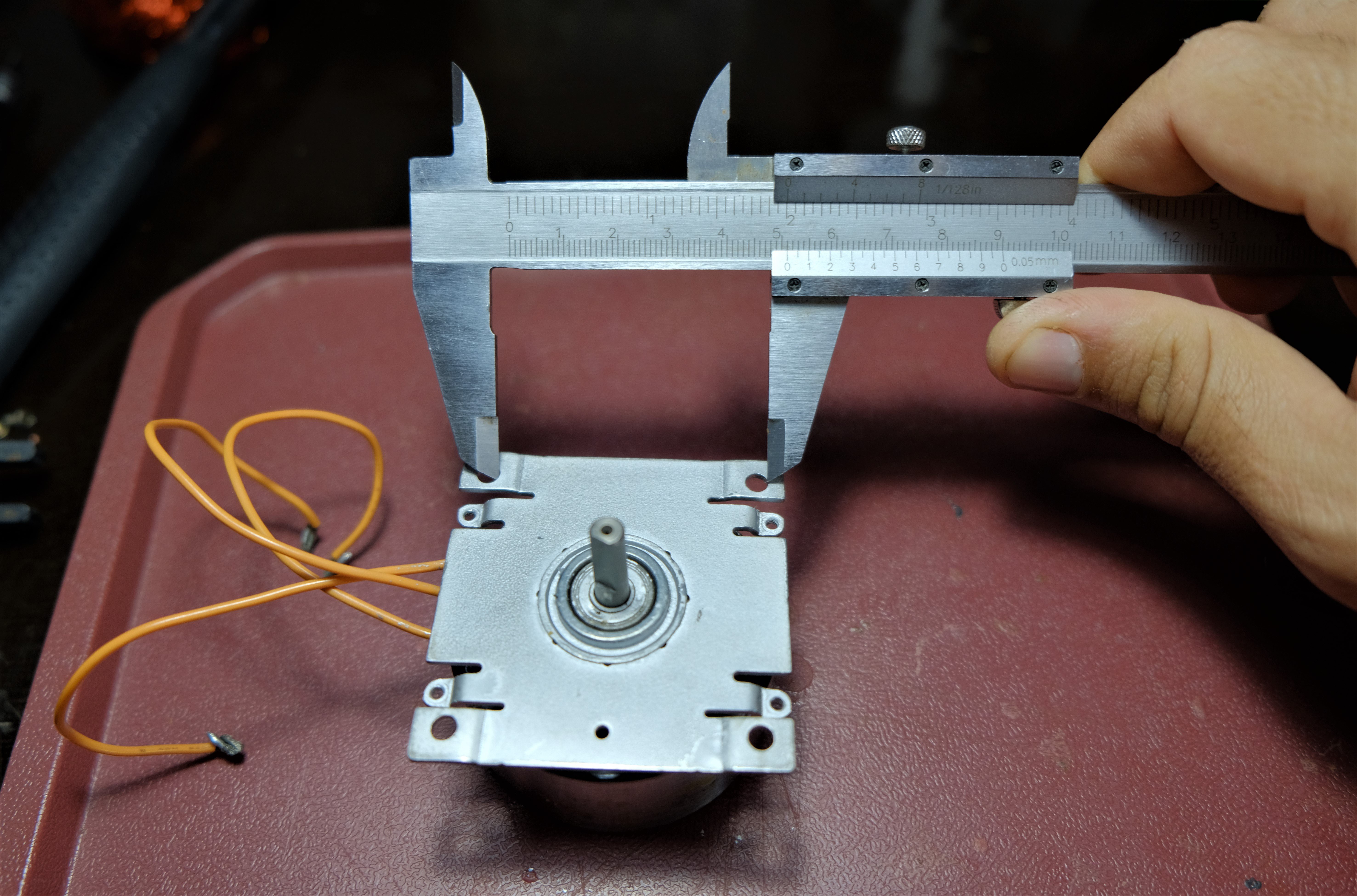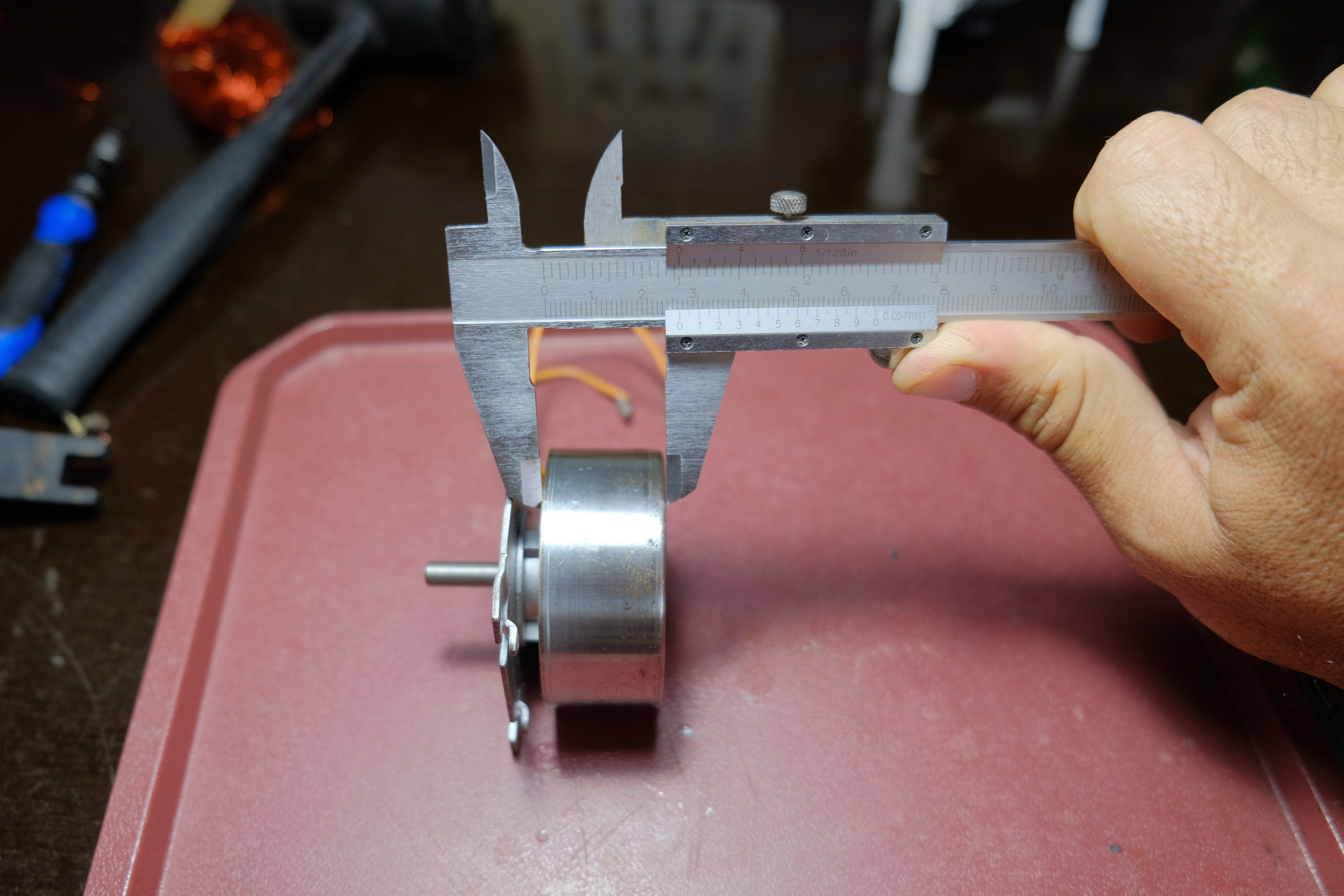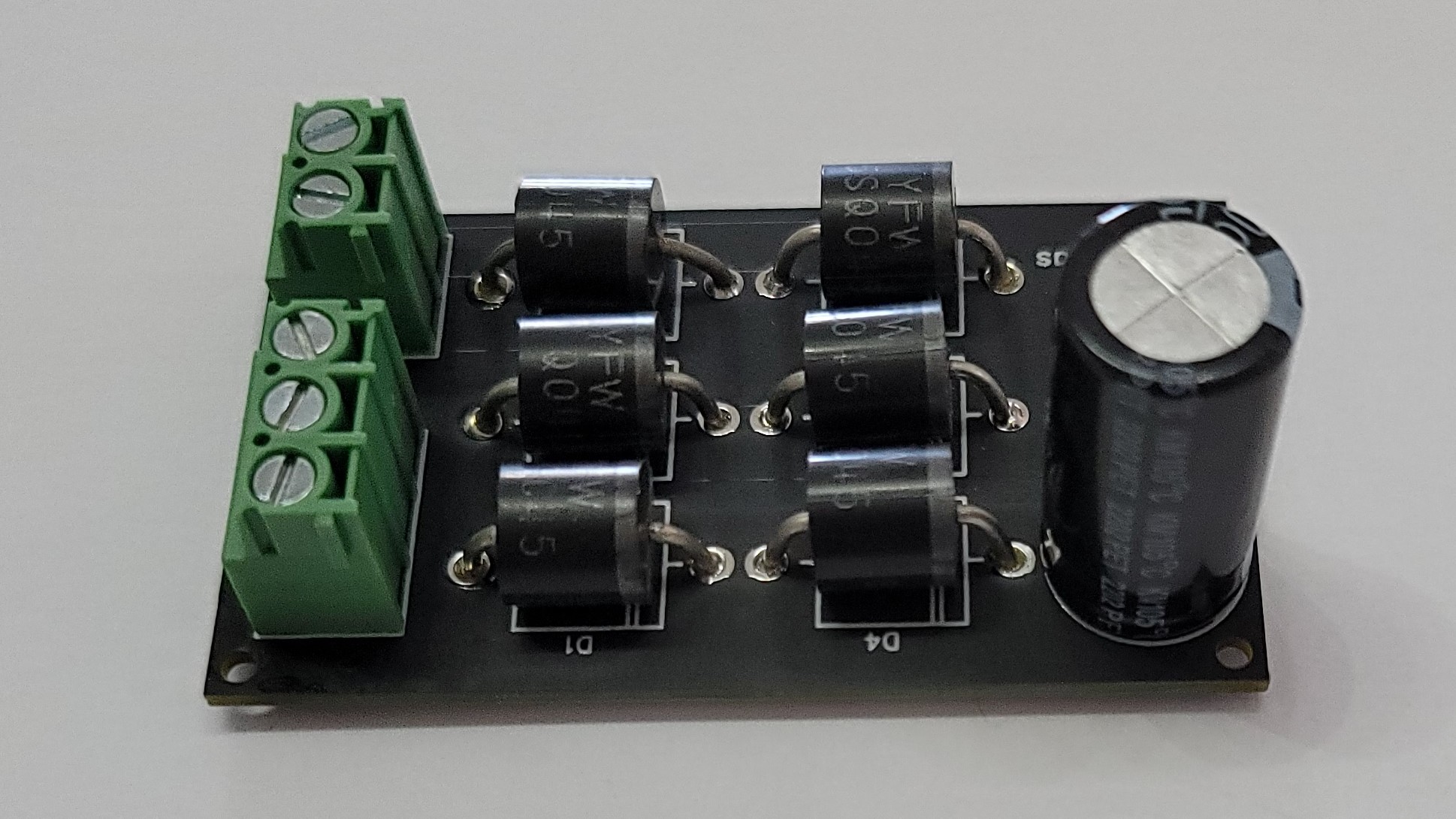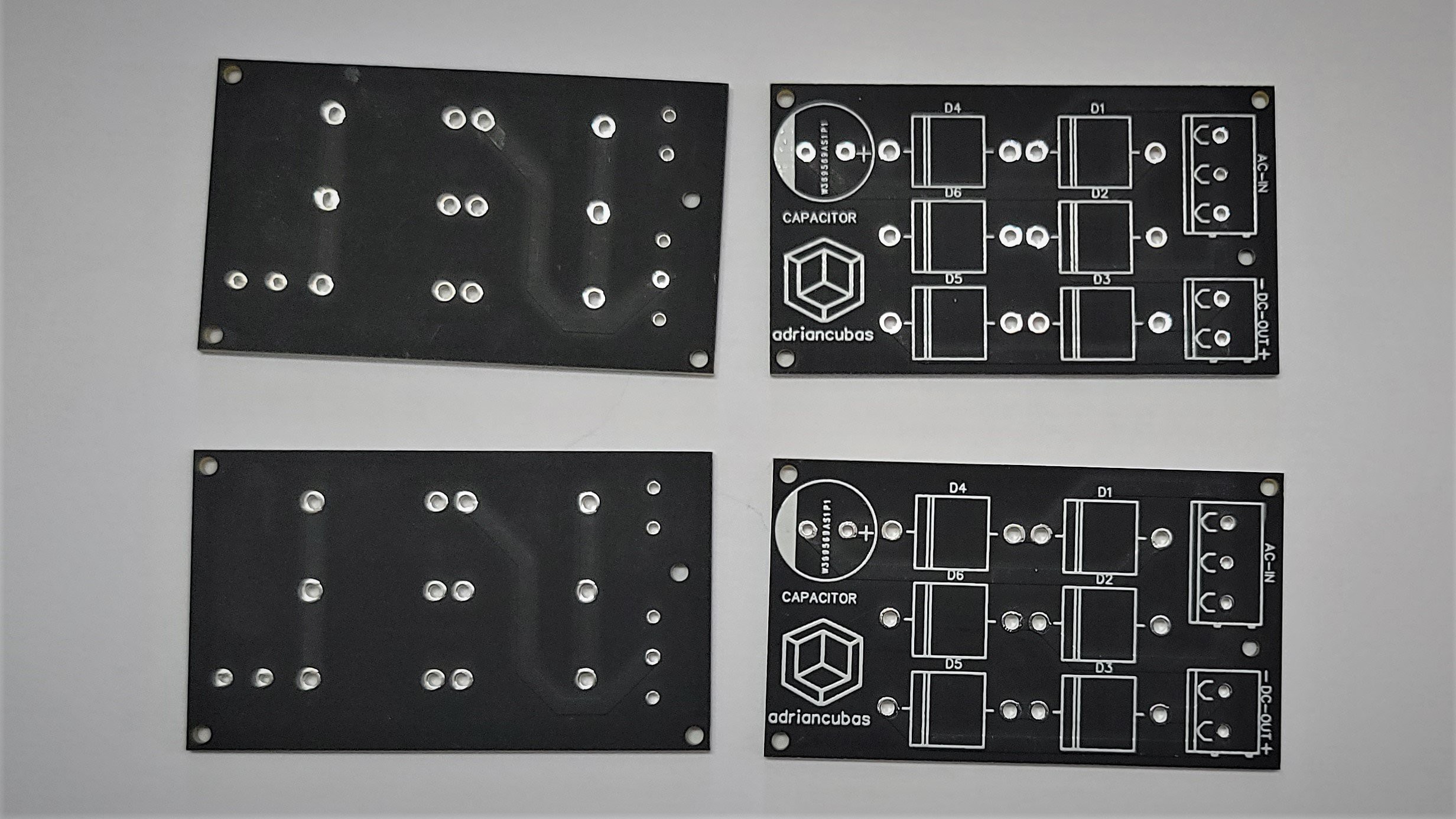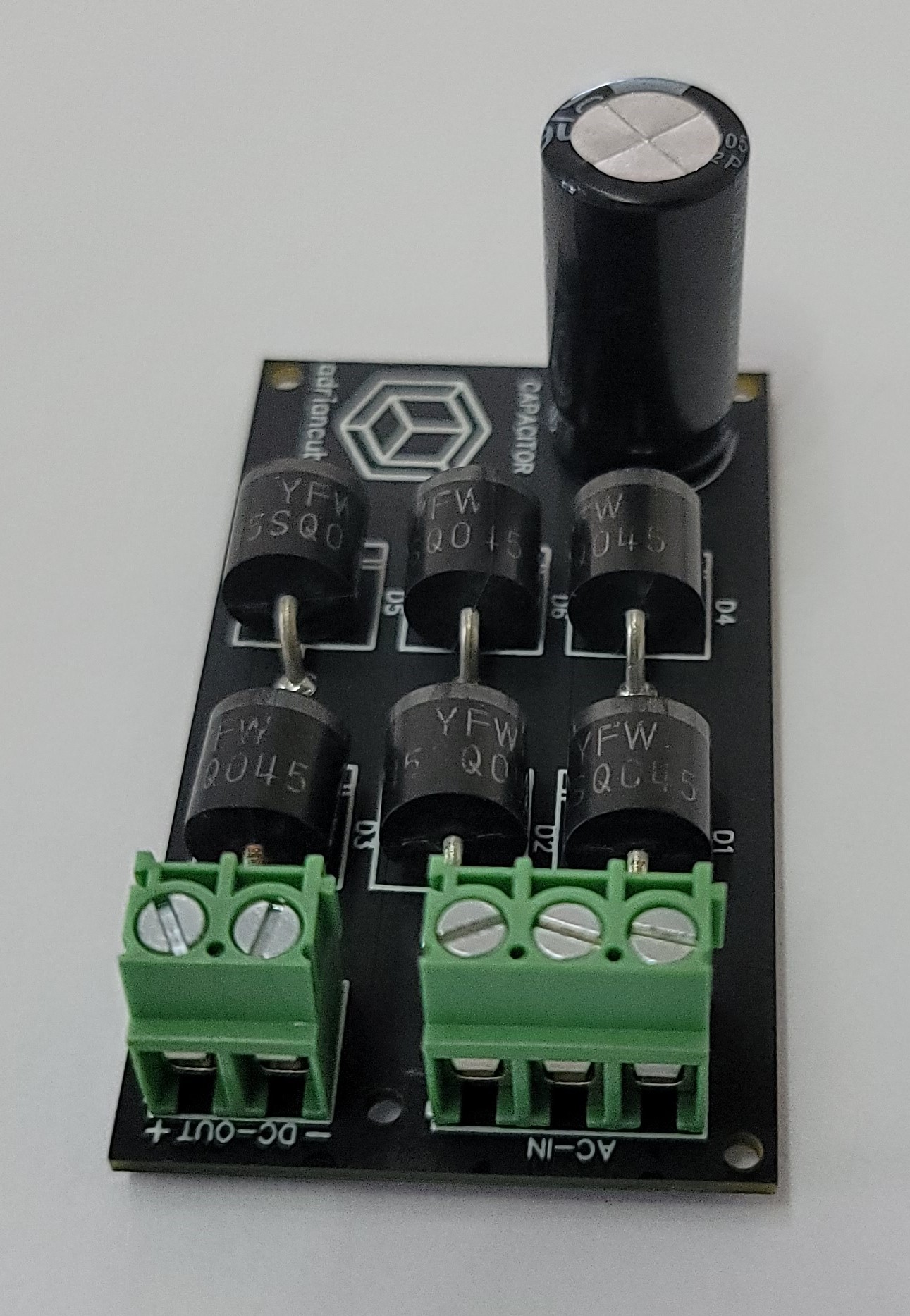-
New changes to Windturer_P4!
03/15/2023 at 15:30 • 2 commentsHi everyone,
I have been making some changes and now I share with you the files of some variations that I have been making. You can download the pieces from the files section.
I have developed a new articulation system for the tail. With the new parts, the tail can rotate 180 degrees and can be held in place by its own weight. It is not necessary to screw and unscrew continuously, only at the beginning to assemble the assembly. The tail is now a bit bigger too.![]()
I have developed a coupling piece to be able to use BLDC motors of the type used in camera stabilizers. To date I have not found any other alternative motors to use as generators that do not have to be modified to deliver the necessary voltage at low RPM (350-550) and that meet the size and weight
![]()
requirements. These Gimbals motors are not the ultimate ideal solution since they have windings made with a very thin gauge of wire, which causes a somewhat high ohmic phase resistance (10-20 ohms).
![]()
Any other more effective solution requires transformations to the motor windings which can be intimidating for some. If you find a generator solution that you think might work, let me know in a comment.
In the following video I show you how, using the motor from the following link, you can easily turn on a fairly long 12V led strip by running the WINDTURER with an ordinary fan.
I have my doubts about being able to do these tests with wind in an open environment without a regulator. The leds could burn out! Note that when the Windturer is running at no load the RPMs are much higher until it stalls. Always try to put a load on the WINDTURER that allows it to start easily but the RPM does not get out of control.
In particular I used a Gimbal motor like this: https://aerialpixels.com/shop/motors/brushless-gimbal-motors/iflight-rc-ipower-brushless-gimbal-motors/ipower-gbm5208-180t-brushless-gimbal- motor-dslr/
Parts for the new assembly are designed based on the dimensions of this electric motor.
Any motor with similar characteristics will work correctly. Unfortunately I have noticed that they are becoming scarcer since fewer and fewer get to make their own GIMBALS.
I'm currently testing one of the RCTimer brand on a garden non-articulated WINDTURER variant (https://rctimer.com/gbm8108-gimbal-brushless-motor-90t-for-red-epic-ect-p0459.html) and the results are somewhat better. Unfortunately they seem a bit expensive. In the future I will develop my own version of a 3D printed generator.
See you in a next LOG, good luck to all! -
New customized "NP-F" Battery solution with a voltage range of 3V-4.2V, protected with a BMS
12/13/2022 at 19:34 • 0 commentsHi everyone,
One of the main problems that you may face when using this Wind Turbine is that it cannot overcome the impedance of the Battery to charge it. If in your area the winds do not blow so fast, if you have used the generator as it comes standard without rewinding it and in turn you have not used a Schottky diode rectifier, it is likely that the voltage obtained is low.
To recharge a 7.4V nominal voltage battery (NP-F standard), it is necessary to apply a voltage higher than this at its terminals.
I came up with an idea that could help many of you. What happens if we use a battery that requires a lower voltage to recharge?
Here's my 3.7V nominal voltage version of a battery that looks like a standard NP-F. Also, this battery is 100% compatible with WINTURER-P4. So, if you already created your version of this Wind Turbine, you don't need to change anything.
Another aspect to highlight is that it can be created from 18650 cells recovered from disused laptop batteries, power tools, etc... With this we are recycling and giving a new use to these batteries that would otherwise end up in the trash.
Affiliate links appear in the following list
For this battery you may need the following items:
• 18650 lithium batteries ( https://amzn.to/3iUcL1b )
• BMS 3V-4.2V ( https://amzn.to/3FojfNC )
• DC power supply socket female panel mount connector ( https://amzn.to/3USBJLJ )
• Contact pins ( https://amzn.to/3HxX1Lt )
• Power bank PCB module board ( https://amzn.to/3PpWNbp )
• 2.1 mm male barrel connector ( https://amzn.to/3WboOWi )
ASSEMBLY INSTRUCTIONS:
Download the STL and print them in ASA or PETG filament. The files were attached in the FILES section of this Project.
In my case I did not use supports to print the pieces and I set the layer height to 0.2mm. Follow the filament manufacturer's recommendations for a successful print.
Solder 2 different colored lengths of wire to two 2mm female connectors
Drill two inside holes so you can get the wires inside the battery case.
Apply some epoxy glue and insert the female pins (you may have to shorten them to fit into their positions)
Solder the above wires to the P- and P+ pads of the BMS. Be careful! The polarity of the connections must match that obtained on the generator.
Check with a voltmeter that all the batteries have a similar voltage. If there is one with a very different voltage you should not use it.
Join the 4 Batteries and tin each other their positive and negative parts. Watch out! You should not join the positive and negative poles of the batteries together because you will cause a dangerous short circuit.
Solder the Positive part of the Batteries to the BMS on the Pad marked with B+ and the Negative part to B-
The Pads P- and P+ are also soldered to the DC connector respecting the polarity (the central part of the connector is positive and the outer part is negative).
Solder the 2.1mm pigtail to the + and - connections of the Power Bank PCB Module Board. Observe the required polarity. This module does not have reverse polarity protection and will be damaged if this occurs.
Place the Power Bank module in its case and cover it with 4 x 2.5mm screws.
HOW TO USE THIS BATTERY
Put the battery in the WINDTURER-P4 and capture energy from the wind. There is no danger of damaging the 18650 cells by overvoltage etc., since the BMS will manage the cells so that this does not happen.
When you need to use the energy captured in the battery, remove the Battery from the WINDTURER and connect the BMS module. Press the side button twice until the side LED turns on, then press once to turn it off.
The lcd panel will display an estimate of the battery charge. Connect any USB device to its ports to provide them with the power they need.
These Power Bank modules can handle currents of even slightly higher 2A.
Note: Never leave the PowerBank module connected to the battery while it is charging in the WINDTURER. If the battery completes its charge and the BMS stops the recharging process, a voltage higher than the allowed one could completely destroy the PowerBank module.
Additionally, if you connect a 5V Micro USB cable to the Power Bank module, you can charge the battery with power from the mains.
In this case 18650 cells were used but using a similar procedure, you can fill this casing with batteries of another type such as NiMH, LiFePO4, etc. even with lower charging voltages. There are many transformations that you could make depending on your needs and objectives. Thanks for following me here.
Best
![]()
-
WINDTURER power estimation with TRACKER software
10/15/2022 at 17:10 • 0 commentsI have been thinking of a simple methodology to correlate the data obtained from the generator, with the behavior of Windturer in normal operating conditions. I have had some accuracy difficulties with certain manual tachometers. I'm still looking for a quality one.
My first idea was to try to place optical sensors and multimeters on the Windturer while it was operating, but placing all that equipment can be cumbersome and time-consuming. Also recording the data can be challenging with the conditions and equipment that I have. Recreating a variable wind, similar to that of Windturer operation under normal conditions, is also another challenge.
The results that I show you below have limitations, but it can be a method of estimating performance.
With the battery installed and under the influence of the wind generated by a fan created with a BLDC drone motor, I was able to generate a wind of around 10.5km/h as seen in the anemometer placed in front of the Windturer.
By shooting with a slow video camera capable of 240 frames per second and using TRACKER software, a free video analysis and modeling tool built on the Open Source Physics (OSP) Java framework, I was able to make certain measurements, in particular the linear speed of the tip of the Blade for a short period of time.
Averaging the values in m/s and converting them to RPM, I was able to conclude that with a value of 10.5 km/h of wind, the rotor rotated at approximately 670 RPM. Correlating this value to those obtained in the generator measurements, it can be inferred that the battery charging current at that time was 0.3A or 300mA. At first glance it might seem like a low value, but keep in mind that 10 km/h of wind is not a high value, and in this case it is very turbulent.
There are complete guides to learn how to use this software and I think it may be appropriate for your measurements. See you!![]()
![]()
-
How can you start using Windturer?
10/10/2022 at 17:47 • 0 commentsHi everyone
In the next video I will show you how you can easily install Windturer and collect free energy. As you can see in the video, the installation was carried out at a low height with respect to the ground and the wind speed was not high. Despite this, Windturer was able to initiate his move!
-
Windturer-P4 design is ready!
10/04/2022 at 18:34 • 0 commentsI am happy to say that you are now ready to download all the Windturer-P4 files. With these files you can print all the pieces. You also have the possibility to modify what you want in your favorite CAD program, depending on your goals and needs. The files can be downloaded directly from the Files section of this project.
Additionally our Portable Wind Turbine already has a logo, brand and slogan. They are shown in the following image. I would love to hear your comments about it.
"Windturer: The Wind Turbine for your adventures"
Although the essence of this new P4-Prototype is consistent with the design philosophy of the P1-Prototype some improvements have occurred.
I believe the feedback I received on this article by Robin Kearey on Hackaday.com: https://hackaday.com/2022/05/02/hackaday-prize-2022-a-3d-printed-portable-wind-turbine-for -hikers/ were decisive in the improvements that I have been implementing. Thank you all for your criticism and suggestions.
All the pieces of the new design have been printed on ASA Filament for validation. The parts have tried to be designed in such a way that they are easy to print even with the recommended type of filament material. In particular I have used this one from the Polymaker brand https://amzn.to/3V0mu4I *affiliate link*
Kyle Burns from https://essentium.com/ has collaborated with this project and recommends printing with this type of filament with exceptional characteristics : https://essentium.com/product/essentium-pps-cf/
In this design, a generator based on a Stepper Motor is no longer used, but rather a BLDC motor, three-phase permanent magnets, rewound so that it complies with a 60 KV ratio. I have dedicated a Log where you can find additional information:
![]()
Blades have been redesigned and optimized with QBlade software. Its characteristics and simulation results can be found here:
They turn out to be more efficient Blades, with less mass and greater mechanical resistance. A 4 Blade configuration is now used which contributes to a higher Torque for rotation at low RPM and allows them to fold much better over the central body.
The central hub is glued directly to the external rotor of the BLDC motor without the need for Collet Prop Adapters. In the first prototype this was a recurring problem for those who replicated it, since the coupling to the shaft was not entirely secure and under certain loads there were
slips. This makes it possible to shorten the length of the arms of the Central Hub and contributes to a greater mechanical resistance of the assembly.
In this prototype, an external electrical cable is no longer used to conduct electricity. It was decided to place on his body batteries of the NP-F type. These batteries are interchangeable. You can leave one recharging and then place another etc. It behaves similarly to a standard NP-F battery charger. You can also use the batteries that best suit your requirements, with or without USB output, of greater or lesser capacity. Also with this you can decrease the total weight of this Portable Wind Turbine if you really don't need such big batteries. By being able to easily remove the battery and replace it, we avoid its obsolescence if the battery is damaged.
The ecosystem of NP-F Batteries is quite large. They are often used in equipment and lights for filming. There are manufacturers that have developed mounting plates with multiple outputs of different voltages, including PD and USB A for this type of battery. I have tried this particular one and find it very useful https://amzn.to/3ExhChR *affiliate link*
The central body includes a cavity where the rectification circuit is placed as well as for future modules such as voltage meters, RPM, load current, power, energy, etc. that could be developed and transmit this data to a mobile application to monitor the process. Although this would be somewhat detrimental to the general efficiency of this system, it would be very interesting to be able to know this data in real time and record it for later analysis.
The tail folding mechanism has been simplified. Now it is enough to loosen the nut on the tail mechanism a little and unfold it to its operating position to tighten the nut again.
The diameter of the bearing of the Yaw mechanism is now larger. This allows the area of the central body that houses it to be better reinforced.
If you want you can start printing the parts right now and start making your own Windturer-P4. I would love to hear your opinions.
The next step would be to elaborate the instructions to help everyone who wants to replicate it.
See you!
-
NP- F batteries as energy storage system of the Windturer-P4
10/03/2022 at 18:00 • 0 commentsFrom the beginning of this Project I always wanted to store the energy captured in lithium batteries, preferably in 18650 type cells. I consider that these cells are a proven technology, with a high energy density, with a high level of safety, accessible and with a not so high price.
NP-F batteries in their different configurations (330,550,750,970 etc…) have this type of cells inside in a 2S configuration, that is, two cells connected in series. In a previous Log, where the electrical characteristics of the generator were addressed, it was concluded that a 2S configuration with a voltage range of 6V-8.4V is recommended as a storage system and this type of battery has this configuration.
As a reference let's take the Samsung INR18650-25C, its technical data sheet can be consulted here: https://www.powerstream.com/p/INR18650-25R-datasheet.pdf
This type of cells can support a maximum of 4A of recharging current for each cell, this is a higher value than that delivered by the generator of our Portable Wind Turbine. We can extract from them a maximum of 20A of discharge current continuously. They have a capacity of 2450mAh, when discharged at a rate of 10A. After 250 charge and discharge cycles they offer only a 2Wh decrease in capacity from the initial 7.4Wh (4A charge current up to 4.2V and 20A discharge current down to 2.5V). At -20 degrees Celsius and a cycle of 10 A of discharge current and 4 A recharge current, they retain 96 percent of their original capacity.
I don't think that all NP-F battery manufacturers use this type of Samsung cells, although I think that the characteristics of the ones they use should be similar in several respects.
Also, NP-F batteries have a BMS circuit inside them that adds safety and protection functions to the cells. I took the job to disassemble one of these to see its internal structure and analyze its characteristics. Specifically, it was an NP-F970 with a charging circuit and USB output https://amzn.to/3SsQVih *affiliate link*
![]()
In the previous photo you can see that this battery is made up of (6)) 18650 cells in 2S3P configuration. The circuit that can be seen above these cells is a BMS (Battery Management System) and the one that can be seen below is the charging circuit, charge level indicator and USB output. You can charge this type of battery with a charger specialized in NP-F batteries or simply through a micro USB connector. You can also power your compatible USB devices directly from this battery.
These batteries also come encapsulated in a plastic case that, while I don't necessarily consider it waterproof, I do consider dust and splash resistant. If any of you know if there is any IP-X certification for this type of battery, could you tell me where to find it?
One of the main functions of the BMS is to prevent overcharging and overdischarging. In addition, these circuits protect against short circuits, limit the maximum charge and discharge current. To test these features, I ran several experiments trying to find answers to the following questions:
- Does this battery have short circuit protection?
- What is the maximum charging current supported?
- What is the maximum load current supported?
- What is the maximum voltage that the BMS allows to the cells?
- What is the minimum voltage that the BMS allows to the cells?
The battery has short circuit protection.
The maximum charging current supported in my experiments was around 4.75A as can be seen in the video. For this, a variable current source was used and the current value was increased until the BMS circuit interrupted the charging process. The experiment was repeated several times and the results were consistent.
To check the maximum discharge current a Load Tester was used like this https://amzn.to/3yd4HNM *affiliate link*
This battery exceeds the 5A discharge current of this module, triggering its overcurrent protections. I tried to use a 55W car bulb and the BMS trips the overcurrent protection. I managed to get the battery to operate at 4.5A continuously with no problems.
Using a variable current source set to deliver a maximum of 1.85A, it was possible to determine that the BMS cuts off the charging process once 8.62V is reached, or approximately 4.3V per cell, which is a bit high for my taste, I would have preferred about 4.15V to promote greater longevity of these cells. In the video you can see this.
In the case of the minimum voltage that the BMS allows, this is 4.7V, about 2.35V per cell, also very low.
I think this manufacturer here has tried to maximize the capacity value over the longevity of this battery.
To conclude, I wish to express that this type of battery is offered as compatible and convenient for the characteristics of our Portable Wind Turbine Winturer-P4.
In the next Log I will be presenting the completed design of Winturer-P4 and the design decisions made in correspondence with the results expressed in these logs.
Thank you for following these developments. See you!
-
Introducing Prototype 4 Blade
10/03/2022 at 02:11 • 0 commentsHaving designed and printed several Blades from the previous Prototypes and experimented with them, I still wasn't happy with the results and knew that they could be more compact and efficient.
For example, the Blades of Prototype 1, which I call the "Intuitive Blades" were designed without the assistance of specialized programs such as QBlade and although their behavior was correct, their performance is much lower than the one I present here. Also, this Blade has a mechanical weakness and under reasonable stress they would always break in the same place. Below is a photo of this problem.
![]()
In the case of the Blades of Prototypes 3 and 4, they turned out to be very large for the objectives of this project and it is not very clear to me that they can withstand winds of about 35Km/h.
So that the Blades P2-P3 could be printed on an Ender 3-type printer, not exceeding the height of a 2-liter soda bottle, a kind of hinge was designed that joined the two parts of the Blade. This area is also prone to damage, especially since it is a larger Blade and the "centrifugal" forces during rotation are greater.
I do not rule out using this type of Blade in other projects if I use other types of more resistant 3D filaments, but I think that for the requirements of this Project they are a bit oversized and make manufacturing more complex and make the project more expensive.
The Prototype 4 Blades turned out to be the right balance I needed. They do not exceed 22cm in length and their performance is on wheels.
Let's analyze some images of the QBlade program where I designed them.
![]()
The Blade P4 is based on the NACCA 6409 airfoil.
One of the frequent problems in this type of fixed pitch wind turbines is starting at low RPM. In order for the Blades to do their job efficiently they must operate at relatively high rotational speeds. This type of profile has proven to be effective at low RPM and guarantees higher lift forces during starting. It is also a narrow profile that results in thinner Blades and lower mass which contributes to less material being spent when printing them and lower forces being generated during rotation.
![]()
In the image above it can be seen that this profile reaches its maximum Lift coefficient (Cl) around 12 degrees of pitch, however we are interested in the angle for which the relationship between the lift and drag coefficients is maximum. The angle for which this occurs is around 5 degrees. When assembling the propellers with the rest of the set, the Blades must be rotated around this angle. All the simulations were made considering a Turbulent Flow (Reynolds Number 100000). This is due to the typical operating conditions of this wind turbine at very low height from the ground.
![]()
In the image you can see the position, chord length, angle of attack and type of profile data obtained after the Betz optimization for a Tip to Speed Ratio of 3. Knowing these values and the type of profile chosen, the Blades can be modeled in the 3D design programs. The Blade was sectioned into 11 parallel planes with a separation distance of 22mm between each. In the Files section, the analysis and design file of the Prototype 4 Blade is included.
QBlade is a public source, cross-platform simulation software for wind turbine Blade design and aerodynamic simulation. https://qblade.org/
![]()
This simulation tells us that at wind speeds of 30km/h a maximum generation power of approximately 40W is obtained. At lower speeds and more common at low altitude, say 20 km/h we get about 12W. Although it could be stated that we have designed a 40W Power wind turbine, this statement is really not very transparent and only in exceptional cases could we obtain those values.
![]()
In this LLT (Lifting-line theory) simulation, the three-dimensional behavior of the designed Rotor is appreciated when it faces a wind flow of 6m/s (21.6 km/h), obtaining about 26.3W of power. In real conditions and considering the losses, a use of about 12-15W of power is estimated.
The QBlade file can be downloaded directly from the Files section of this Project. You can analyze it carefully from QBlade, you could even make new optimizations and generate your own Blades which you can then export and use with the rest of my STL files. As long as you keep the two 20mm diameter circular profiles in the Blade design, you can experiment as much as you want and the project will still be compatible with your own Blades.
That has been all for this Log. In the next Log I will present the chosen energy storage system. Thanks for keeping up, see you!
-
RESULTS OF THE ELECTRICAL MEASUREMENTS TO THE GENERATOR P4
09/23/2022 at 13:40 • 0 commentsFollowing a procedure similar to the electrical measurements that I have made to the previous generators (motors), I present below the results that I obtained with the Prototype 4 generator.
I coupled the P4 generator to a three-phase electric motor whose RPM was varied with a VFD (Variable Frequency Drive). Using an oscilloscope with a magnetic probe, I accurately detected the rotational frequency and thus the RPM at which the P4 generator was rotating. Measurements of the relationship between open circuit voltage vs. RPM, short-circuit current vs. RPM, as well as charging current for 18650-type lithium batteries in 1S2P and 2S3P configuration, respectively, vs. RPM were made.
A DC Boost-Buck Converter type converter inserted between the generator and the batteries was also used to see if there was an increase in the charging current.
During the experiments and measurements carried out, the following questions were answered
1- What is the electrical resistance value of the motor windings?
2- At how many RPM of generator P4 is 1V (kV value) obtained?
3- What is the maximum short circuit current at the expected RPM in the rotor?
4- What is the best configuration of 18650 batteries (1S or 2S) for the storage of the energy generated in the wind turbine?
5- Does the use of DC-DC converters favor an increase in the charging current of the batteries with this generator and under the expected operating conditions?
The results presented below will influence the design of the Blades and the energy storage system.
The motor windings turned out to be approximately 6.5 Ohms. Recall that this generator was wound with 80 turns per pole in a star-shaped three-phase configuration. The wire gauge used was 0.35mm in diameter. In total there were 12 poles.
The motor turned out to be approximately 60kV, that is, for every 60 turns of the rotor, 1V is obtained. This graph shows the values obtained.
![]()
The maximum short circuit current was 1.7 (A) at 888 RPM. The results are shown below.
![]()
The charging current values in the single cell configuration are higher than those of 2 cells, however, the energy generated in both cases is very similar at the same RPM. I consider using the configuration of 2 18650 cells in series, since the resistance torque is less in the generator. It also makes it possible to obtain the necessary RPM for the rotor to work with good efficiency, at higher RPM. In addition, the resistance torque is less when the rotor begins to rotate.
The cells that were used are capable of storing 8.14Wh of Electric Energy each. In the case of the 2S3P battery, it has a total of 6 cells, which means that it is a 48.86Wh battery. If we divide this value by 7.4V, which is the nominal voltage value of two 18650 cells in series, we obtain that it is a 6600mAh battery. This Batt at a stable charge rate of 0.6 A would take around 11 hours (estimate) to fully charge. A Samsung Galaxy S22+ battery is 4500mAh, but at 3.7V, which translates to about 16.65Wh. Ignoring the energy losses, we can estimate that in 11 hours, you would be able to charge this phone at least approximately 3 times. About 3 hours and a half approximately for each charge of the phone.
There are several assumptions in this reasoning, but I think it gives an idea. Results may vary and charging current may be higher or lower on average, depending on wind speed.
![]()
![]()
A DC-DC (Boost-Buck) converter was also used in the experiments. At approximately 300 RPM in the generator, which corresponds to about 5V of voltage obtained, the converter begins to deliver an output at stable voltage. Through two potentiometers this value can be configured up to 35V. It is also possible to set the maximum delivery current of this module up to a maximum of 4A.
However, when the batteries to be charged are connected in both configurations (1S and 2S), it is not capable of regulating the output voltage. The voltage drops to similar values as if this converter were not connected. It seems that a much higher generation power is required to guarantee that this happens. It was concluded that it is better not to use it because there is no benefit in doing so, on the contrary, the efficiency decreases with its use.
![]()
![]()
Taking into consideration the previous conclusions, in the following Log I will present the new Blade designed for Prototype 4 as well as the chosen storage system.
Some Pics and a video of this process!
Thanks for following me here.
See you!
-
PROTOTYPE 3 REJECTED!
09/17/2022 at 15:24 • 0 commentsIt's hard to say, but I had to abandon the development of prototype 3. Don't worry, I'm not going to abandon this project, in fact, today I am in a much more advanced step than what I am going to describe in this Log.
The main reasons that supported the design of prototype 3 were precisely related to the characteristics of the selected generator. Let us remember that it was a BLDC motor, recovered from a DJI M600 Drone. This type of motor, as explained in the measurements made to it in a previous Log, is capable of producing one volt for approximately every 130 RPM. To get 10V the propellers had to turn at 1300 RPM, very fast for normal wind conditions. In order to obtain those RPM in the generator (electric motor) but for the propellers to turn at lower RPM and taking advantage of the torque of the new designed propellers, prototype 3 includes belts and pulleys. Here the problems begin, this design requires at least three bearings, two GT2-type pulleys and two custom-designed axles, in addition to the remaining bits and pieces from previous prototypes. It also turned out to be very large and heavy. The structures that would support it would also have to be larger and that would also lead to more weight. Too complicated and expensive for my taste! I inadvertently fell into the trap of looking for complicated redesign paths.
I know many people hate Stepper Motors as generators and to a certain extent I understand them (they are inefficient and quite heavy), but believe me that in wind generation devices as small as this project, it is very difficult to beat at low RPM. That is why my first build (Prototype 1) used a Stepper Motor.
Prototype 1 turned out to be well accepted and today I am proud to receive feedback from users of this platform who have already replicated it and are getting their own performance and application experiences. It has been used as a power source for automatic chicken coop doors, even as an electrical power source for remote sensors that measure humidity, temperature, wind speed, etc.
Prototype 1 proved to be feasible, but there is certainly room for improvement and I have been on that path for a few months now.
Prototype 4 has already been designed and features a modified BLDC motor as a generator. The same motor I once rewound from 35 turns per pole to 50 turns today is 80 turns per pole (12 Poles in total) using a thinner wire gauge (0.35mm diameter) and improving my winding skills lol. It was connected in a star configuration with three phases. In the next log I will explain its electrical performance, but let me tell you that due to the previous tests that I have been able to carry out, it perfectly meets expectations and exceeds the stepper motor of Prototype 1 in generation.
I leave you some photos of the process and a small demonstration. Thanks for reading. You guys are all amazing. See you in the next Log!!!
![]()
![]()
![]()
![]()
![]()
![]()
![]()
![]()
![]()
-
Rectifier Circuit + Capacitor ready!
07/29/2022 at 15:50 • 0 commentsIn a previous Log I published the Full Wave Rectifier + Capacitor circuit that I intend to use in this Wind Turbine. Thanks to PCBWay and his kind team this circuit is now a reality! From what I have been able to verify, the manufacturing and quality control process is very well structured and at all times the user can know what stage of the process their order is at. They have a very intuitive and very helpful Web platform. Something that caught my attention is that they sent me preliminary photos before the final assembly to check any detail that could be correct or not and correct it before concluding the work. After my confirmation they proceeded with the remaining steps.
I have shared the project on the PCBWay digital platform at the following link. Through this you can order its manufacture and I guarantee that the results will be incredible.
![]()
![]()
![]()
 adriancubas
adriancubas